Boosting your home's curb appeal is about creating a first impression that reflects personal style and enhances its character. An aesthetic house exterior not only increases your property's value but also creates a welcoming atmosphere for guests and a source of pride for you. From modern minimalist designs to timeless traditional looks, there are countless ways to transform your home's facade. Exploring different colors, materials, and landscaping techniques can unlock your home's potential, turning it into a standout property on the block. These ideas offer inspiration to refresh your exterior and create a visually stunning home.
1. Modern Farmhouse Exterior with Board and Batten Siding
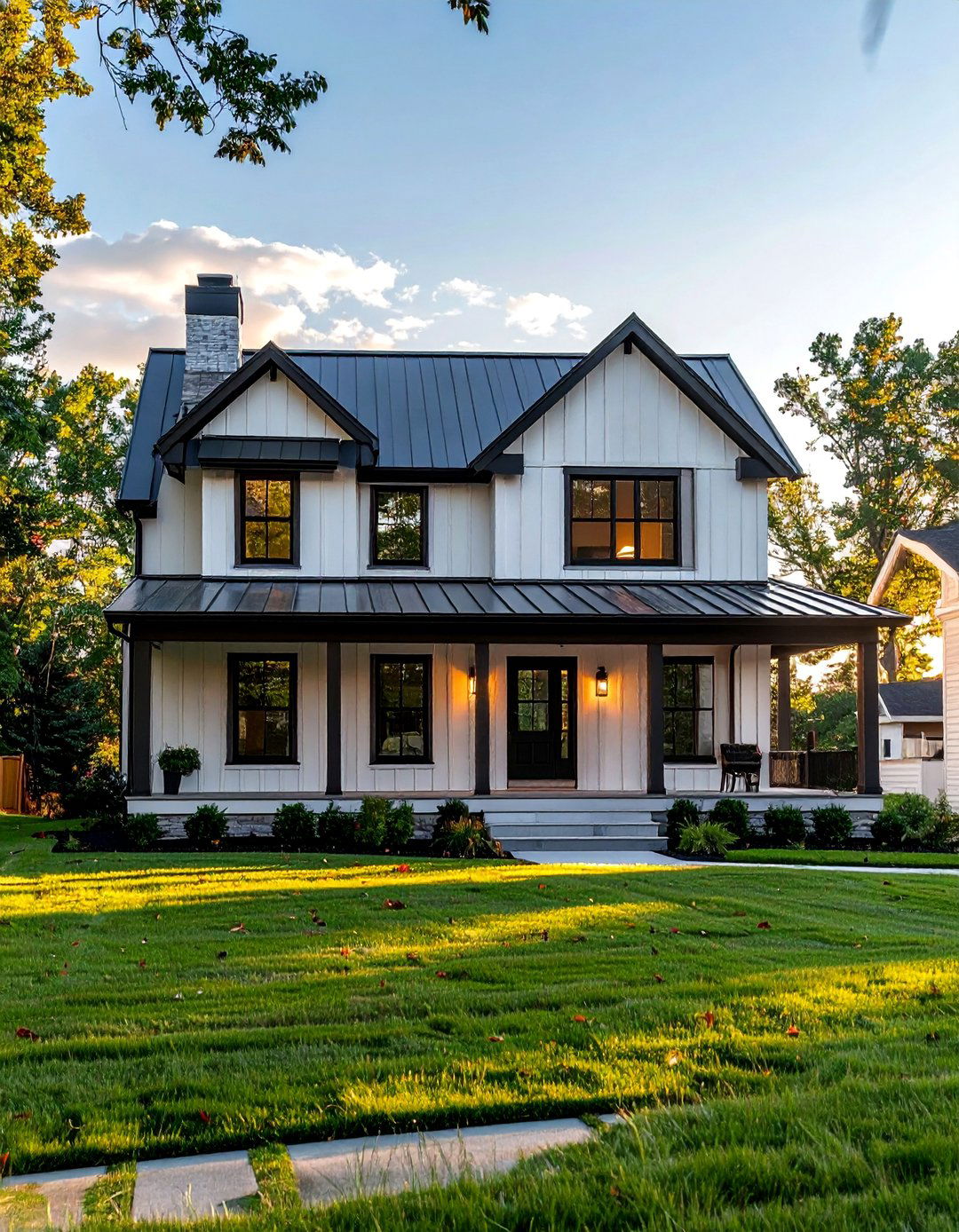
A modern farmhouse exterior combines rustic charm with sleek, contemporary lines for a look that is both cozy and sophisticated. This aesthetic is defined by its use of board and batten siding, which creates clean vertical lines and adds textural interest. Typically painted in classic white or a soft neutral, the siding provides a crisp backdrop for contrasting elements like black window frames, metal roofing accents, and natural wood details. A welcoming front porch with simple, sturdy columns and minimalist railings completes the look, offering a perfect blend of old-world comfort and modern design simplicity that significantly enhances curb appeal.
2. Scandinavian-Inspired Exterior with Natural Wood Cladding
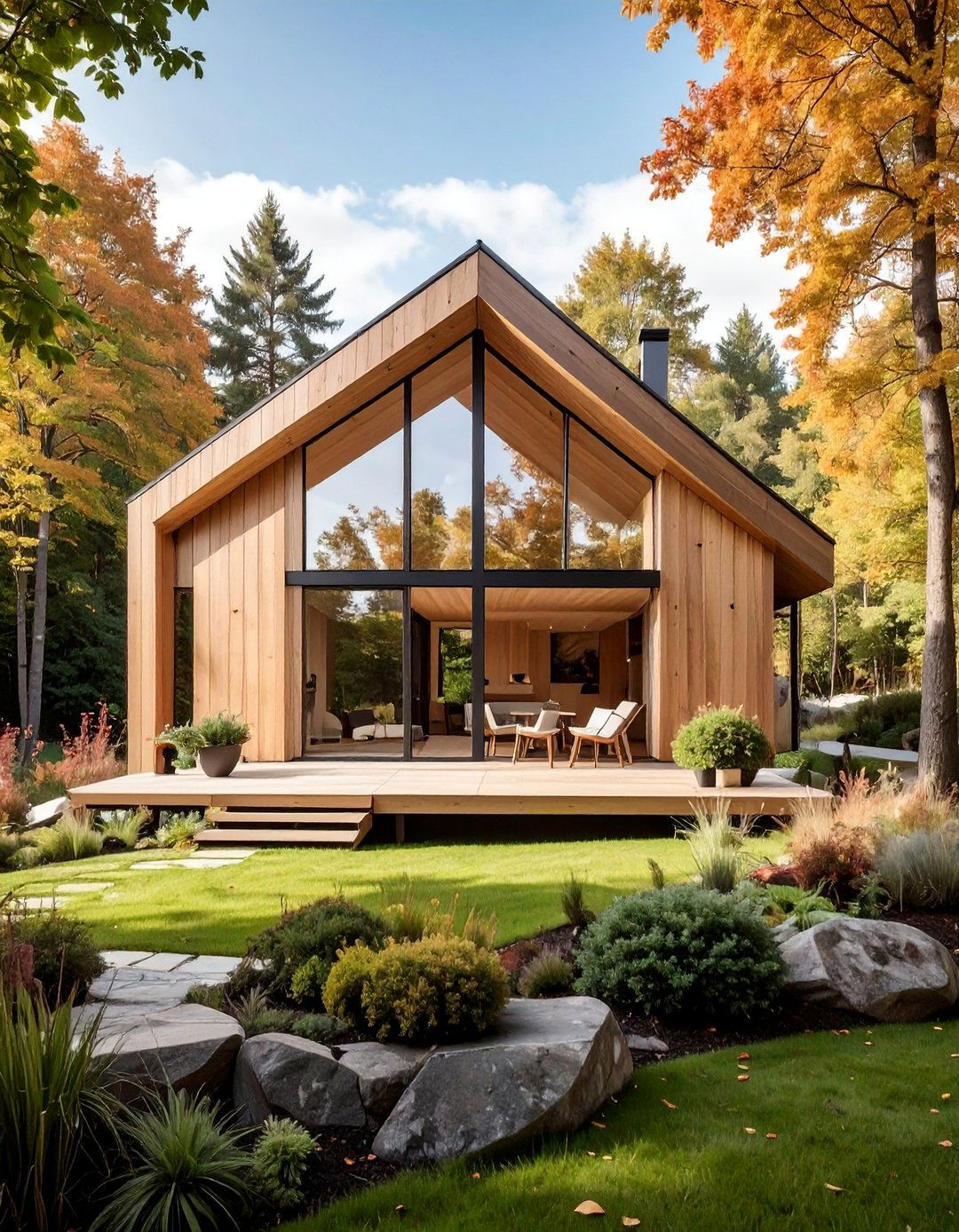
The Scandinavian-inspired house exterior emphasizes simplicity, minimalism, and a deep connection to nature. This design philosophy is beautifully expressed through the use of natural wood cladding, often light-toned woods like cedar or pine, which adds warmth and organic texture to the facade. Large, strategically placed windows are a hallmark of this style, flooding the interior with natural light and blurring the lines between indoors and out. Complemented by a neutral color palette of whites, grays, and blacks, and often featuring a simple gabled roofline, this aesthetic creates a serene, uncluttered, and highly functional home exterior that feels both modern and timeless.
3. Dark and Moody Exterior with Charcoal Paint
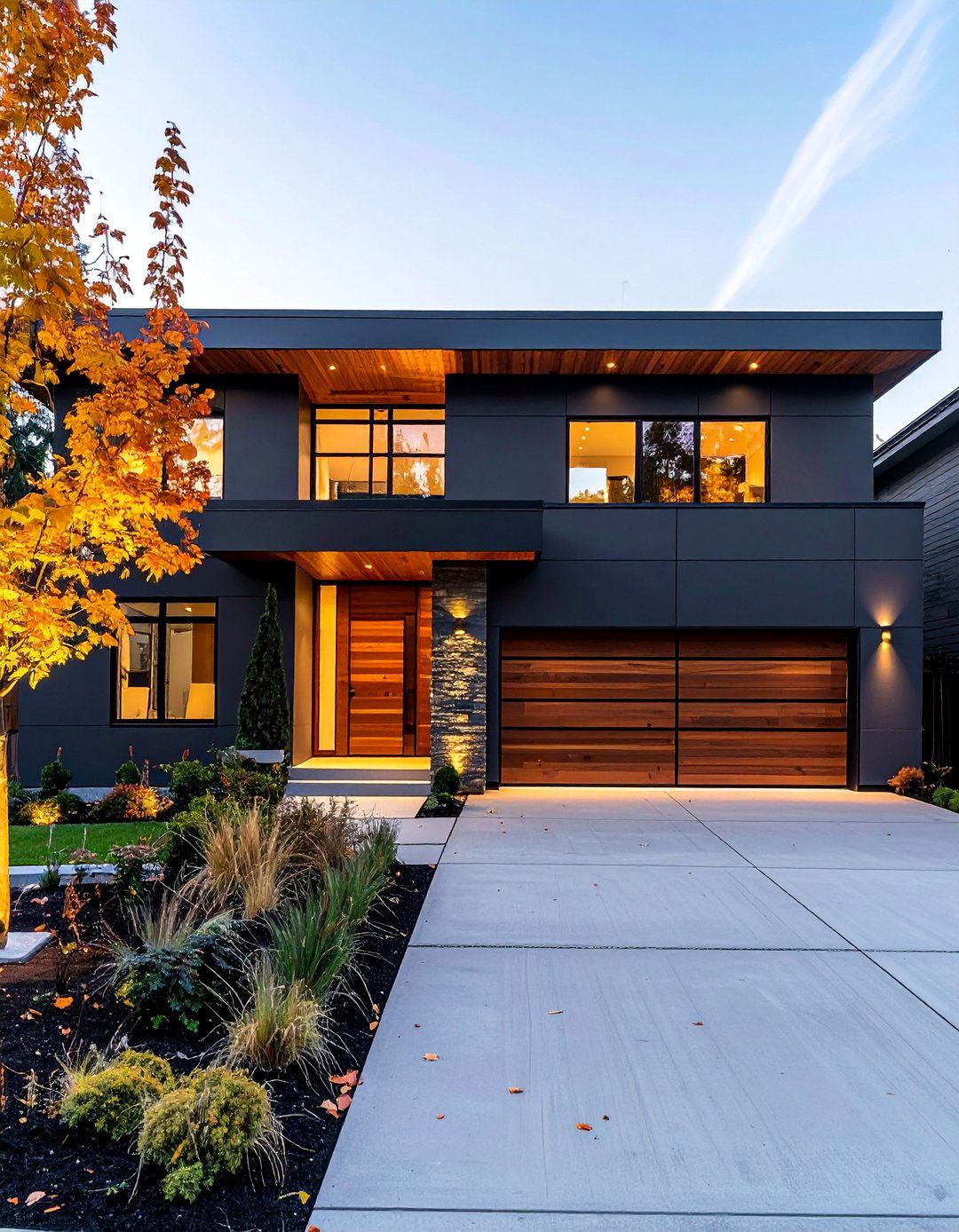
For a dramatic and sophisticated statement, a dark and moody exterior featuring charcoal or near-black paint is an increasingly popular choice. This bold color choice creates a powerful visual impact, making architectural details pop and giving the home a contemporary, high-end feel. To prevent the look from feeling too somber, it's essential to incorporate contrasting elements. Warm wood accents on the front door, porch ceiling, or garage doors provide a natural, inviting touch. Additionally, lush green landscaping and thoughtfully placed exterior lighting can soften the dark facade, creating a balanced and stunningly aesthetic house exterior that stands out with understated elegance.
4. Mid-Century Modern Exterior with Clean Lines
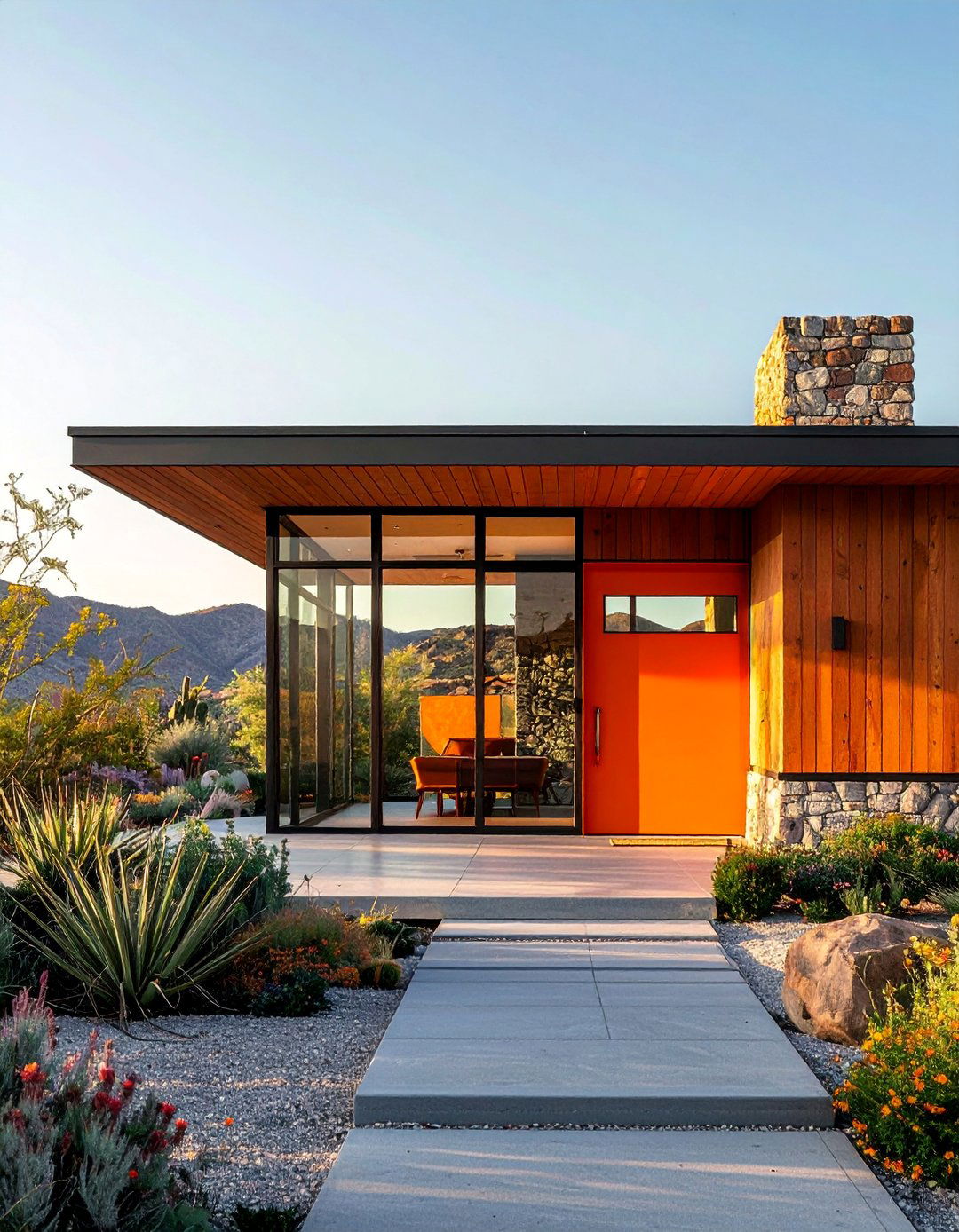
A Mid-Century Modern exterior is characterized by its clean lines, minimalist aesthetic, and integration with nature. This architectural style, popular from the 1940s to the 1960s, embraces simplicity with flat or low-pitched rooflines, large glass windows, and an open, uncluttered feel. Geometric shapes and a mix of natural and man-made materials, such as wood, stone, and steel, are common features. The color palette often includes earthy tones accented with pops of vibrant color on the front door. This design focuses on functionality and form, creating a timelessly cool and effortlessly chic house exterior that continues to inspire contemporary home design.
5. Spanish Revival Exterior with Stucco and Terracotta Tiles
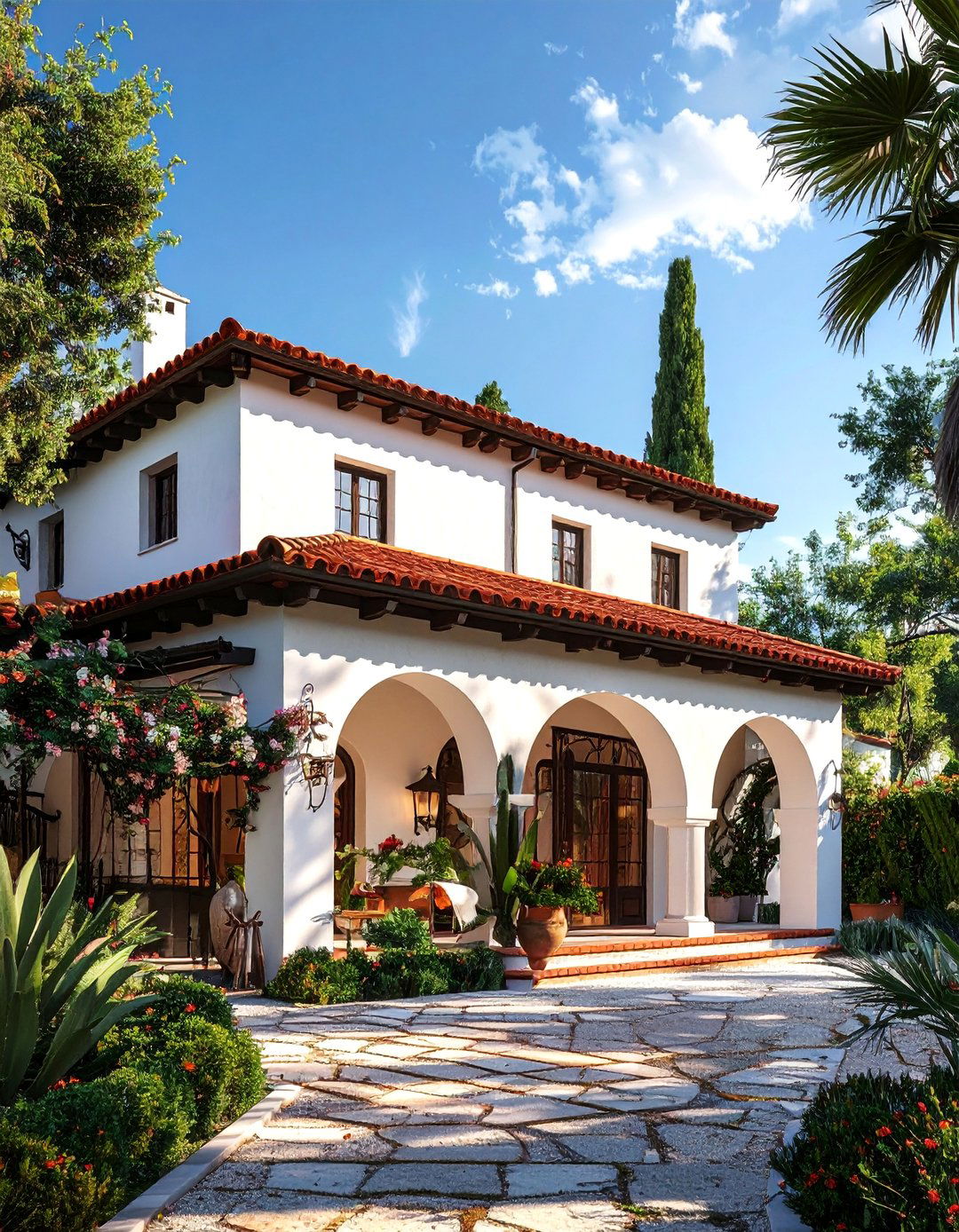
The Spanish Revival house exterior exudes warmth, history, and rustic elegance. This style is instantly recognizable by its smooth stucco walls, typically in shades of white, cream, or earthy tones, which provide a beautiful canvas for other architectural elements. Low-pitched roofs adorned with red or orange terracotta tiles are a defining feature, adding vibrant color and texture. Arched doorways and windows, ornate wrought-iron details on balconies and grilles, and courtyards or patios with decorative tile work further enhance the Mediterranean feel. This aesthetic creates a romantic and inviting home that feels like a timeless retreat, rich with character and charm.
6. Coastal Cottage Exterior with Light and Airy Colors
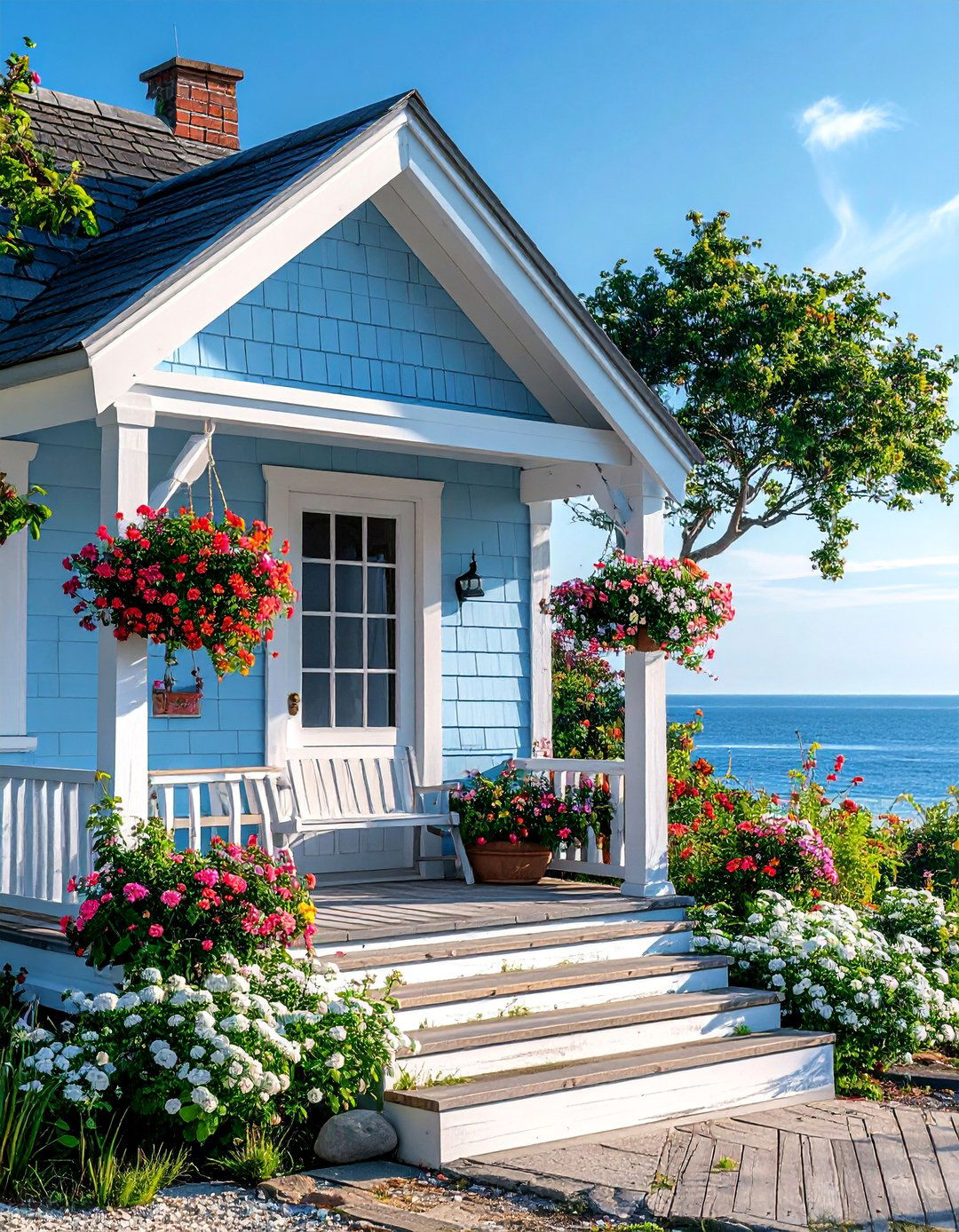
A coastal cottage exterior captures the relaxed, breezy essence of seaside living. This aesthetic is defined by a light and airy color palette, featuring crisp whites, soft blues, seafoam greens, and sandy beiges that evoke the colors of the beach. Light-colored siding, such as shingles or horizontal lap siding, enhances the casual charm. A welcoming front porch with simple railings, outdoor furniture for relaxing, and perhaps a porch swing are key elements. Large windows allow natural light to pour in, while details like shutters, window boxes filled with flowers, and a brightly painted front door add to the inviting and cheerful curb appeal.
7. Industrial-Style Exterior with Brick and Metal Accents
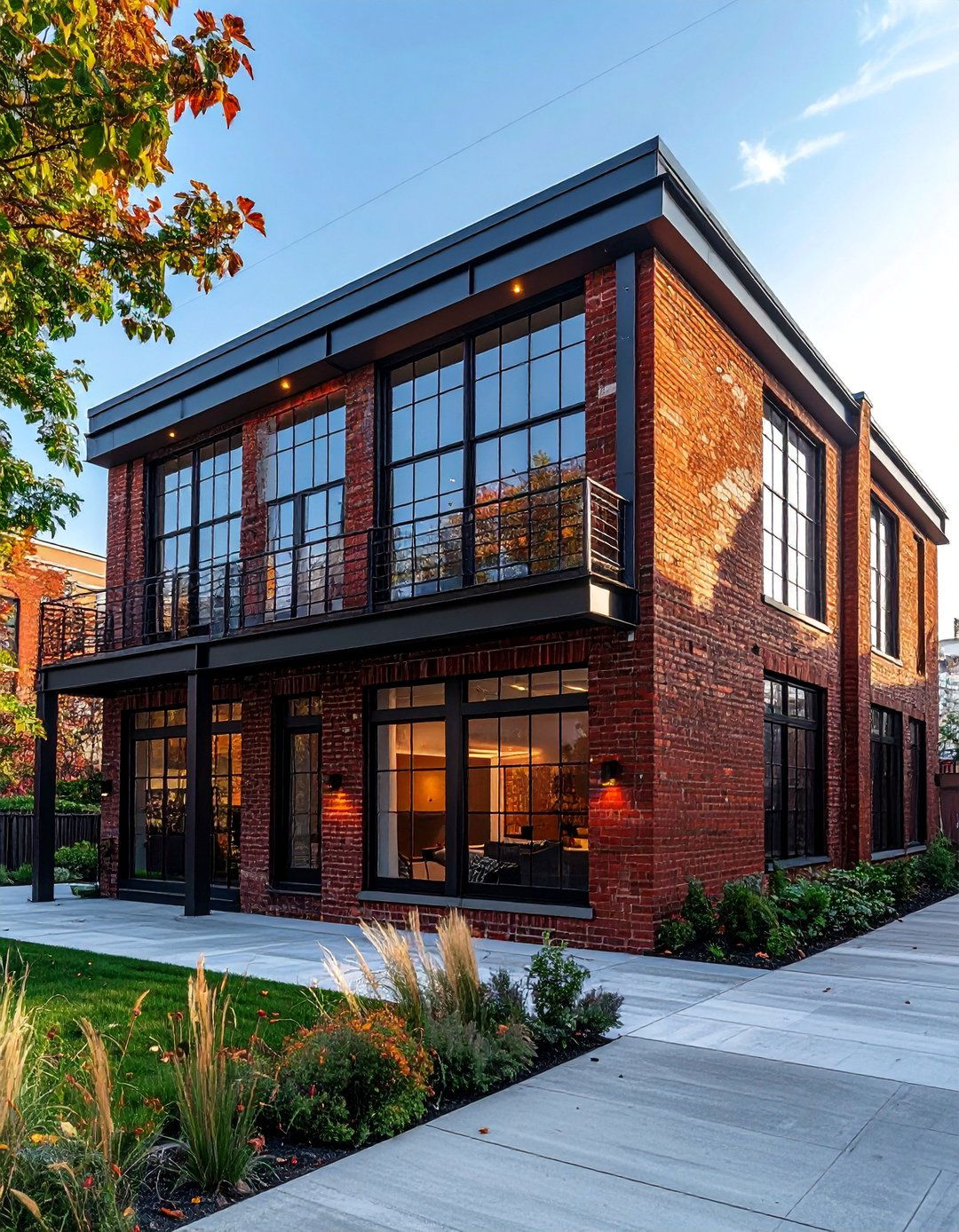
The industrial-style house exterior draws inspiration from warehouses and urban lofts, creating a look that is both raw and refined. This aesthetic prominently features materials like exposed brick, concrete, and metal. A combination of red or weathered brick with dark metal accents on window frames, roofing, and railings creates a striking contrast. Large, factory-style windows with black grilles are another hallmark, allowing for abundant natural light while reinforcing the industrial vibe. The overall design is minimalist and functional, often incorporating reclaimed wood for warmth. This style results in a unique, edgy, and highly durable exterior with a strong, contemporary character.
8. Tudor-Style Exterior with Half-Timbering and Steep Roofs
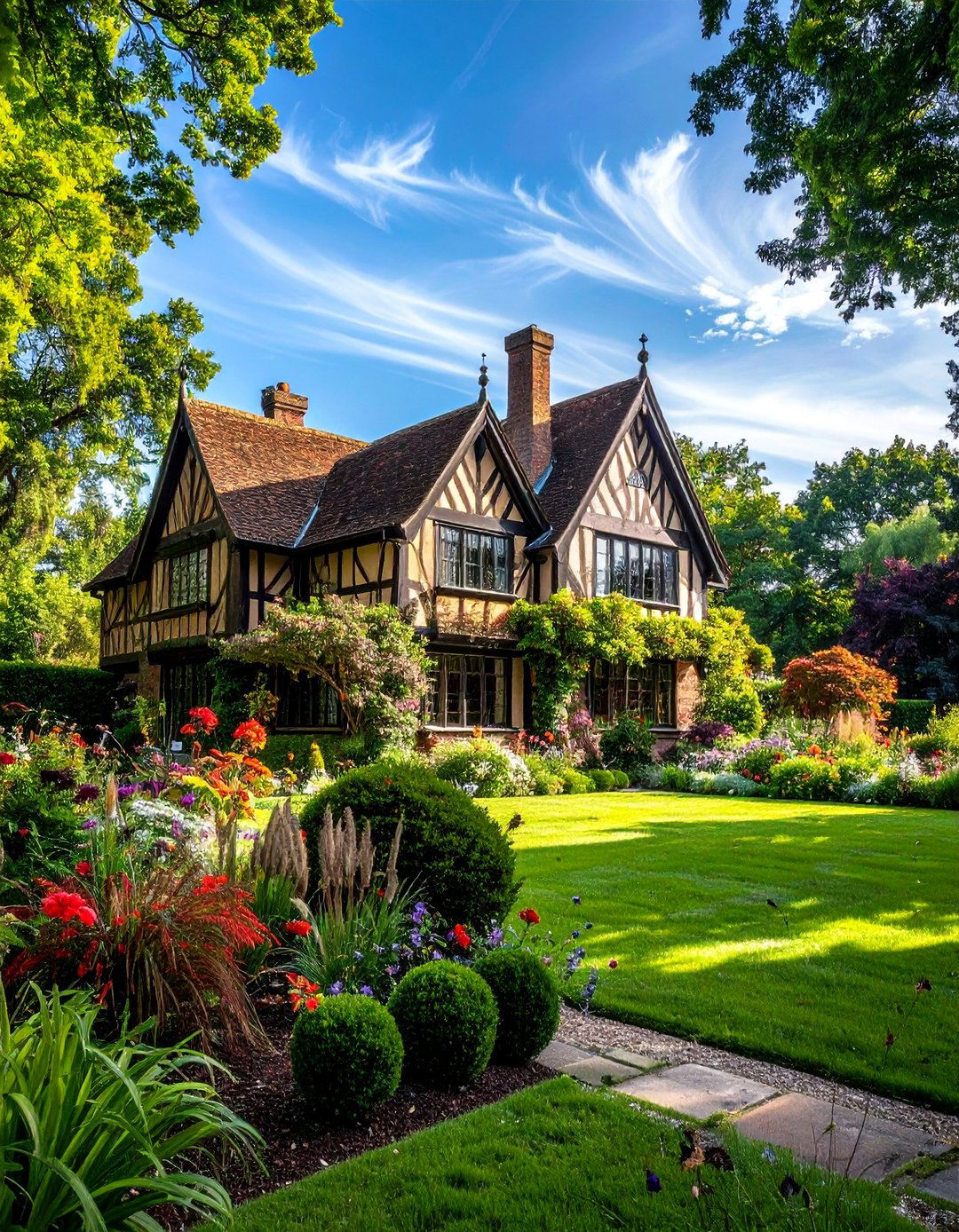
A Tudor-style exterior brings a touch of old-world English charm and storybook appeal to any neighborhood. This architectural style is distinguished by its decorative half-timbering, where dark wooden beams are set against a light-colored stucco or stone background. Another key feature is its steeply pitched roof, often with multiple overlapping gables that create a dramatic and complex roofline. Tall, narrow windows, sometimes with small, diamond-shaped panes, and prominent brick or stone chimneys add to the historic character. This classic aesthetic results in a stately and romantic home with a rich, textured facade that feels both grand and invitingly cozy.
9. Cape Cod Exterior with Symmetrical Design
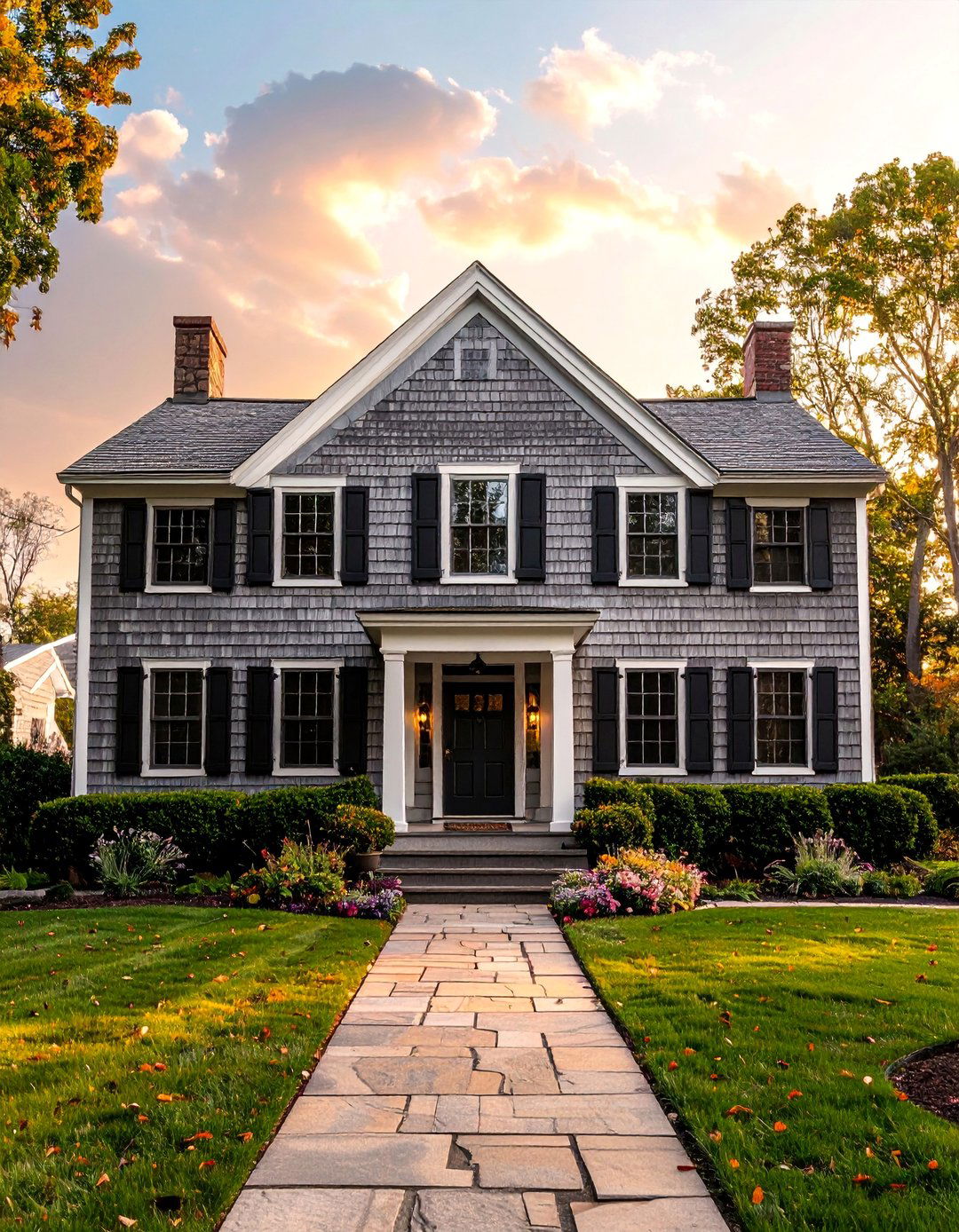
The Cape Cod house exterior is a timeless American classic, celebrated for its simple, symmetrical, and practical design. Originating in colonial New England, this style is characterized by a rectangular shape, a steeply pitched gabled roof to shed snow, and a central front door flanked by two multi-paned windows on each side. The facade is typically clad in weathered gray shingles or classic white clapboard siding. Dormer windows on the second story often punctuate the roof, adding light and space to the upper level. This unadorned yet charming aesthetic creates a sense of balance, order, and cozy simplicity that remains enduringly popular.
10. Victorian Exterior with Ornate and Colorful Details
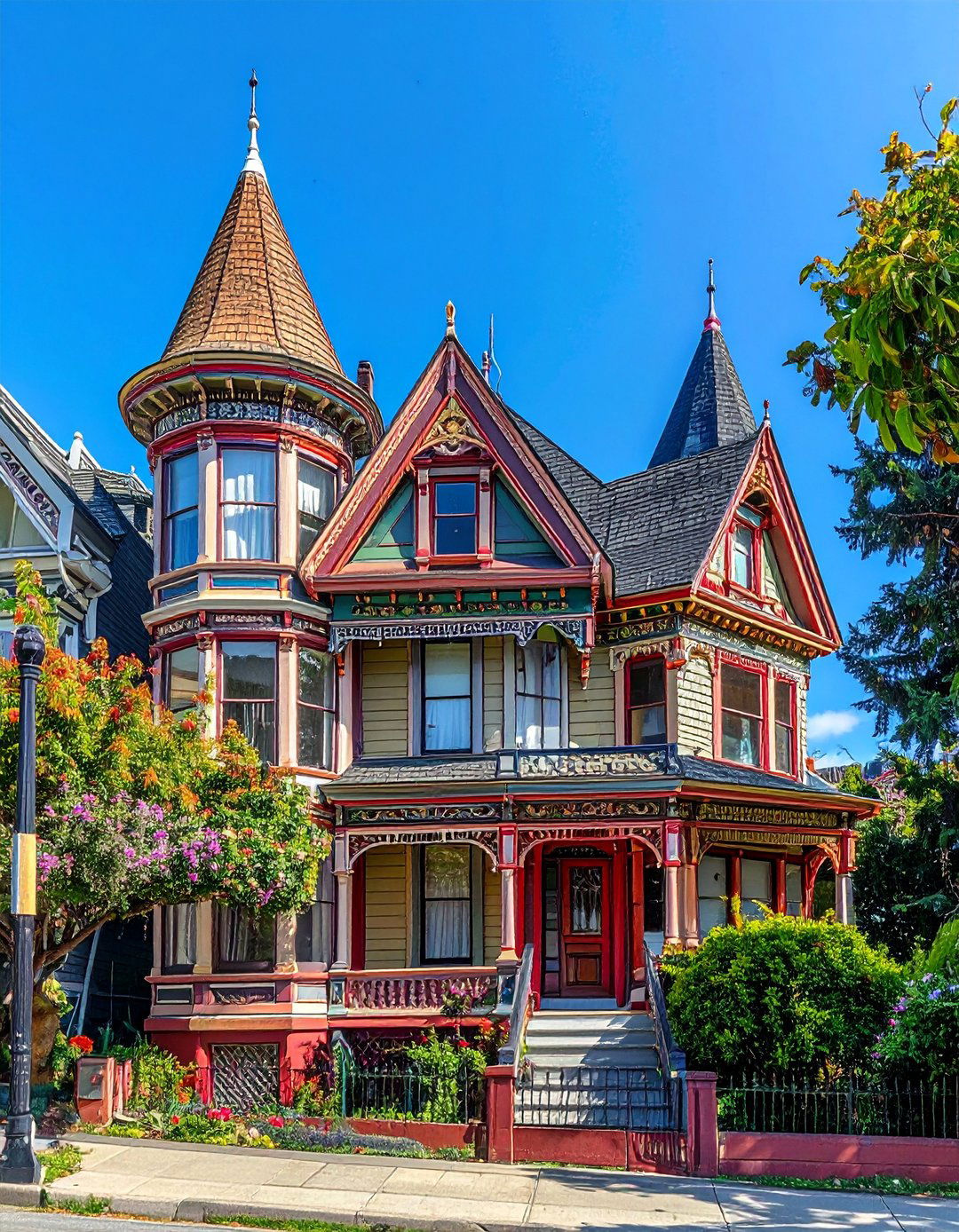
A Victorian house exterior is a celebration of ornate detail, intricate craftsmanship, and vibrant color. This architectural style, popular during the late 19th century, is known for its elaborate and asymmetrical designs. Features include steep, multi-faceted rooflines, decorative trim (often called gingerbread), and bay windows or towers that add dimension to the facade. Siding may combine different materials and textures, and the color palettes are often bold and complex, using three or more contrasting hues to highlight the intricate details. A covered front porch with turned posts and decorative railings completes this grand, romantic, and visually captivating aesthetic.
11. Minimalist Exterior with a Monochromatic Palette
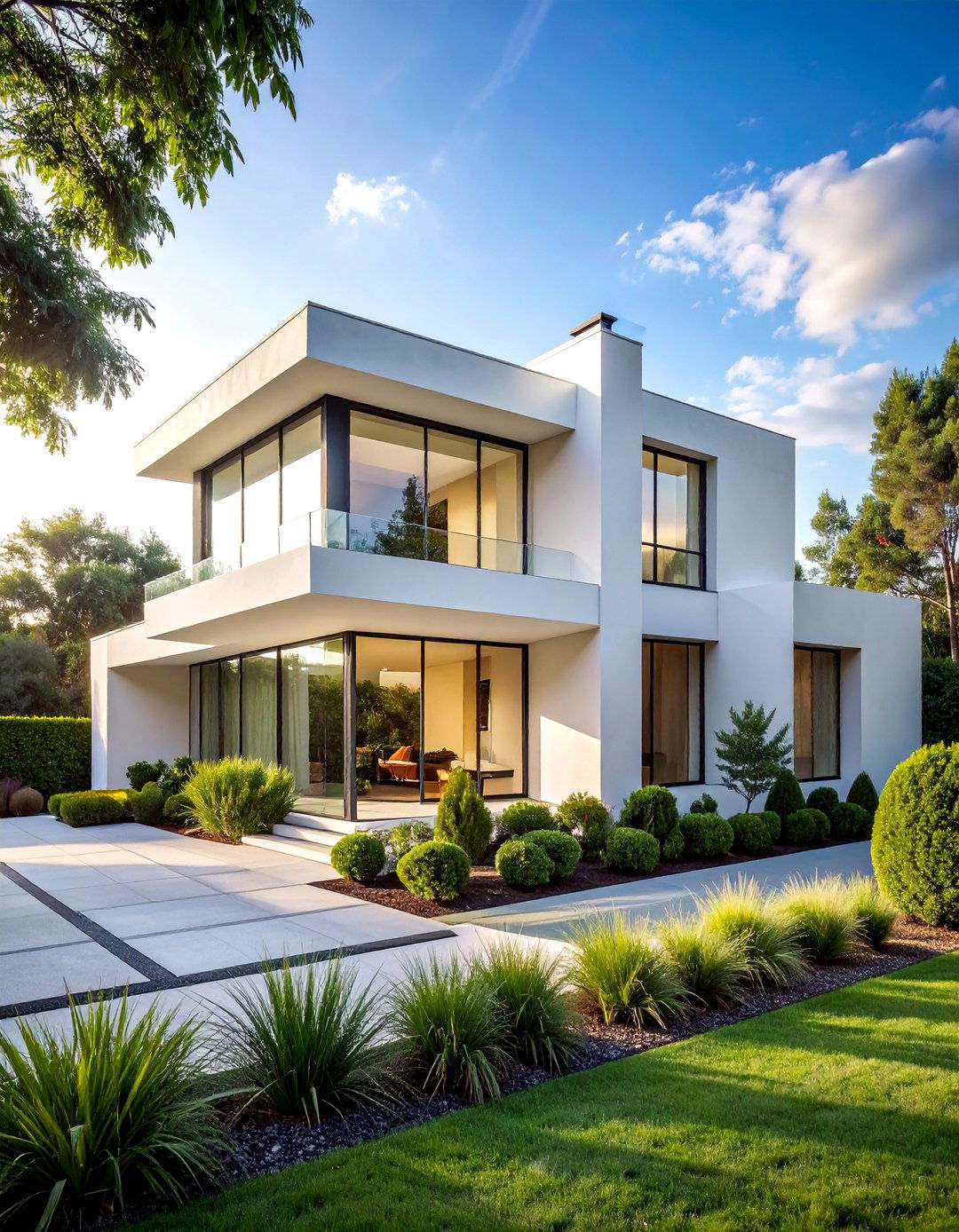
A minimalist house exterior focuses on the beauty of simplicity, clean lines, and a restrained color palette. This design philosophy strips away non-essential elements, resulting in a sleek, uncluttered, and highly sophisticated look. A monochromatic color scheme, often in shades of white, gray, or black, is a key characteristic, creating a cohesive and serene appearance. The focus is on form and material, with smooth surfaces like stucco, concrete, or metal panels. Windows are typically large and unadorned, and landscaping is kept simple and geometric. This aesthetic achieves a powerful visual impact through its elegant simplicity and thoughtful composition.
12. Craftsman Exterior with Natural Materials and a Welcoming Porch
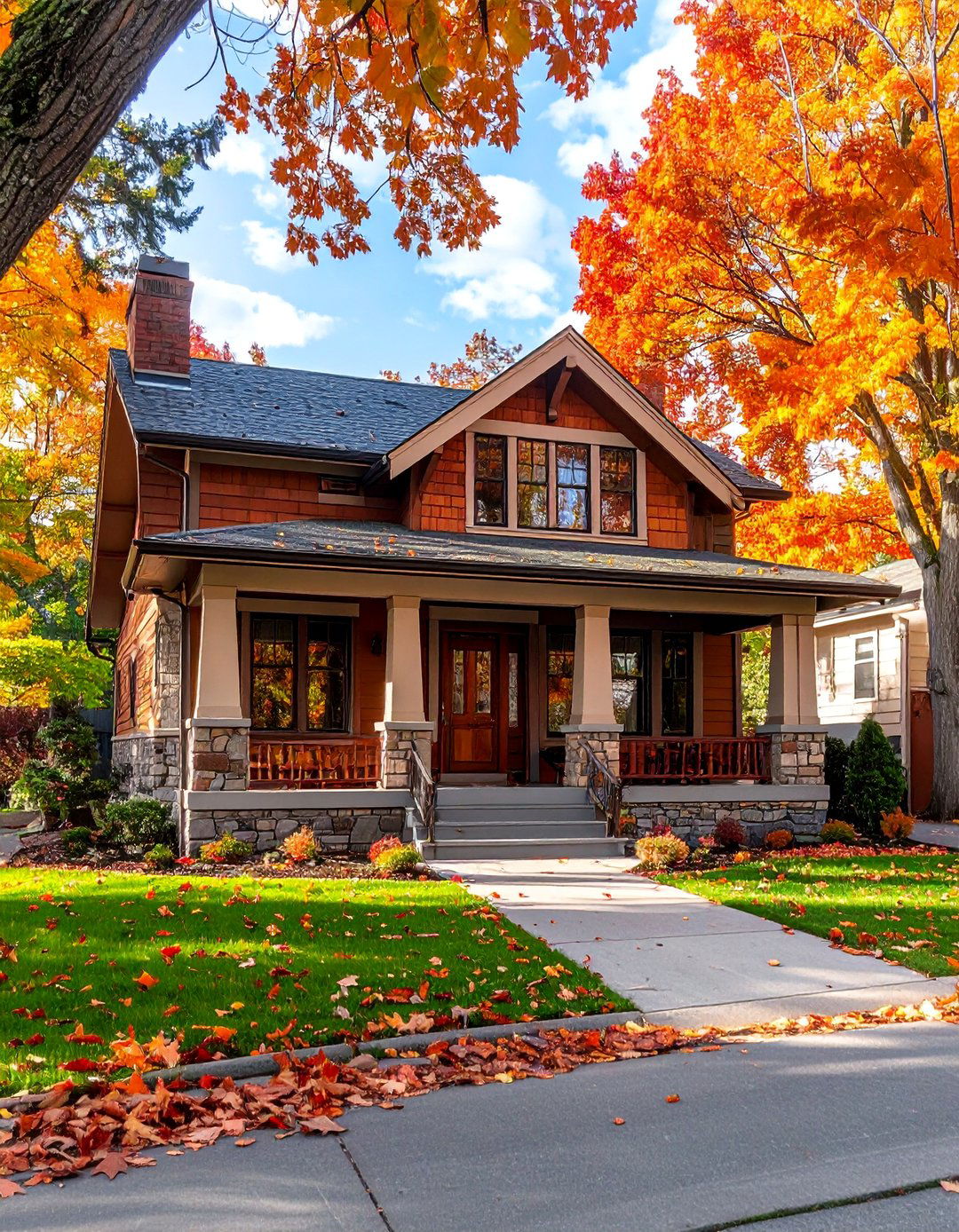
The Craftsman house exterior emphasizes natural materials, fine workmanship, and a strong connection between the indoors and outdoors. This beloved American style is characterized by its low-pitched rooflines with wide eaves and exposed rafters. A large, welcoming front porch supported by thick, tapered columns is a quintessential feature, creating a functional outdoor living space. The facade often combines materials like wood siding, stone or brick accents, and handcrafted details. Windows are typically multi-paned, and the overall aesthetic is one of sturdy, honest construction and warm, inviting charm that feels deeply rooted in its surroundings.
13. Japanese-Inspired Exterior with Zen Landscaping
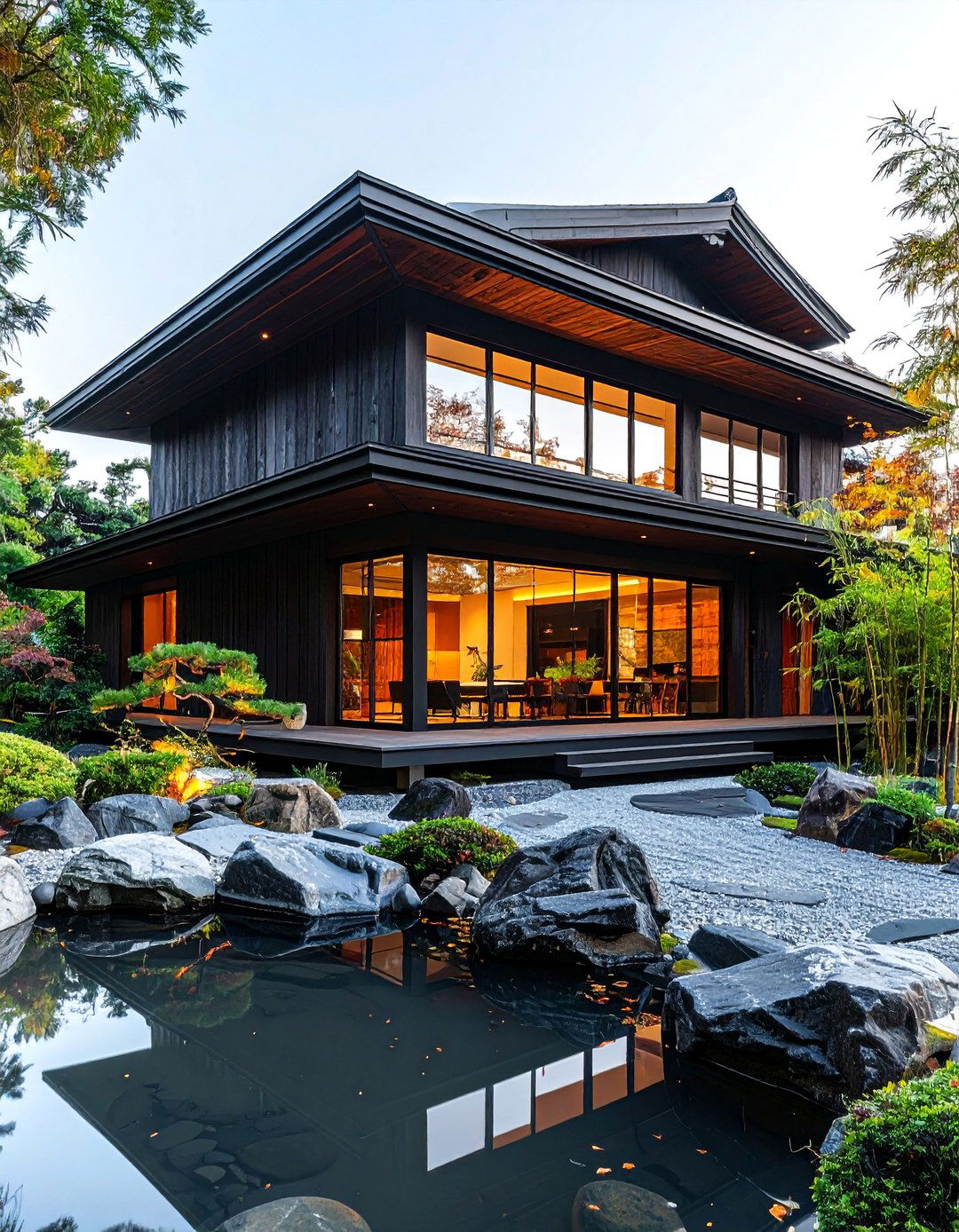
A Japanese-inspired house exterior is designed to create a sense of tranquility, balance, and harmony with nature. This aesthetic is characterized by clean lines, natural materials, and a minimalist approach. Wood, often charred using the *shou sugi ban* technique for a dramatic, dark finish, is a common cladding material. The design often includes elements like overhanging eaves, sliding screens (*shoji*), and a seamless transition to the outdoors. The surrounding Zen landscaping is crucial, featuring carefully placed rocks, moss, bamboo, and water features to create a serene and meditative environment that extends the home's peaceful atmosphere to its exterior.
14. Desert Modernism Exterior with Earthy Tones
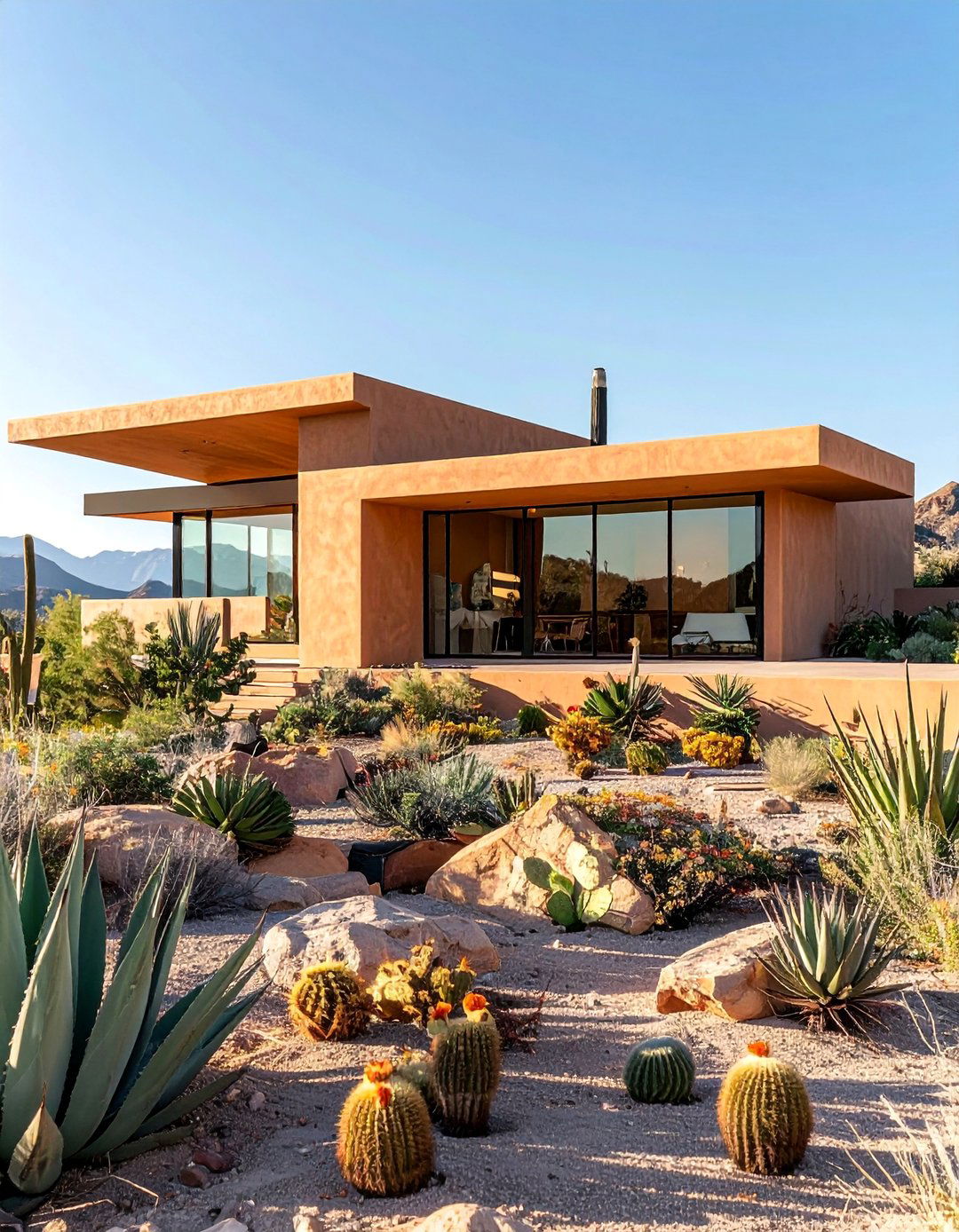
Desert Modernism is an architectural style that blends clean, modern lines with the rugged beauty of a desert landscape. This aesthetic is defined by its use of earthy tones and natural materials that harmonize with the surrounding environment, such as sand-colored stucco, stone, and weathered steel. Flat or gently sloping rooflines with wide overhangs provide shade from the intense sun. Large glass walls and clerestory windows are used to capture stunning desert views while maintaining a connection to the outdoors. The landscaping features drought-tolerant plants like cacti and succulents, creating a cohesive and sustainable exterior that is both striking and contextually appropriate.
15. Colonial Revival Exterior with Symmetrical Grandeur
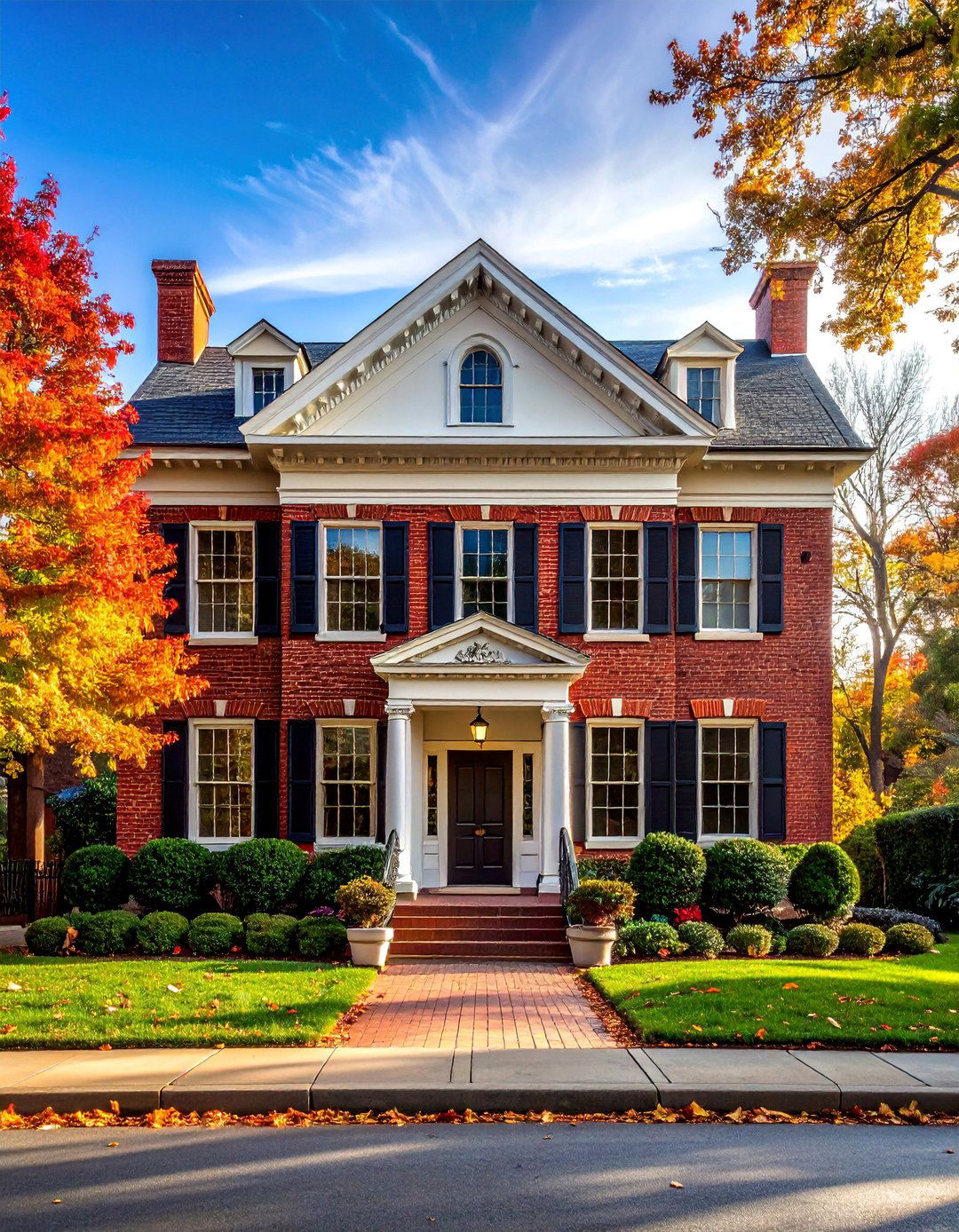
The Colonial Revival exterior is a classic American style that exudes timeless elegance and stately grandeur. Its most defining feature is a strict, formal symmetry, with a central front door often accentuated by a decorative pediment and flanked by an equal number of windows on each side. The facade is typically brick or white clapboard, contributing to its dignified appearance. Multi-pane, double-hung windows with dark shutters are characteristic, as are columns or pilasters framing the entrance. This style draws on historical precedents to create a sense of order, balance, and enduring appeal, making it a popular choice for a sophisticated home.
16. Bohemian Eclectic Exterior with Mixed Textures and Plants
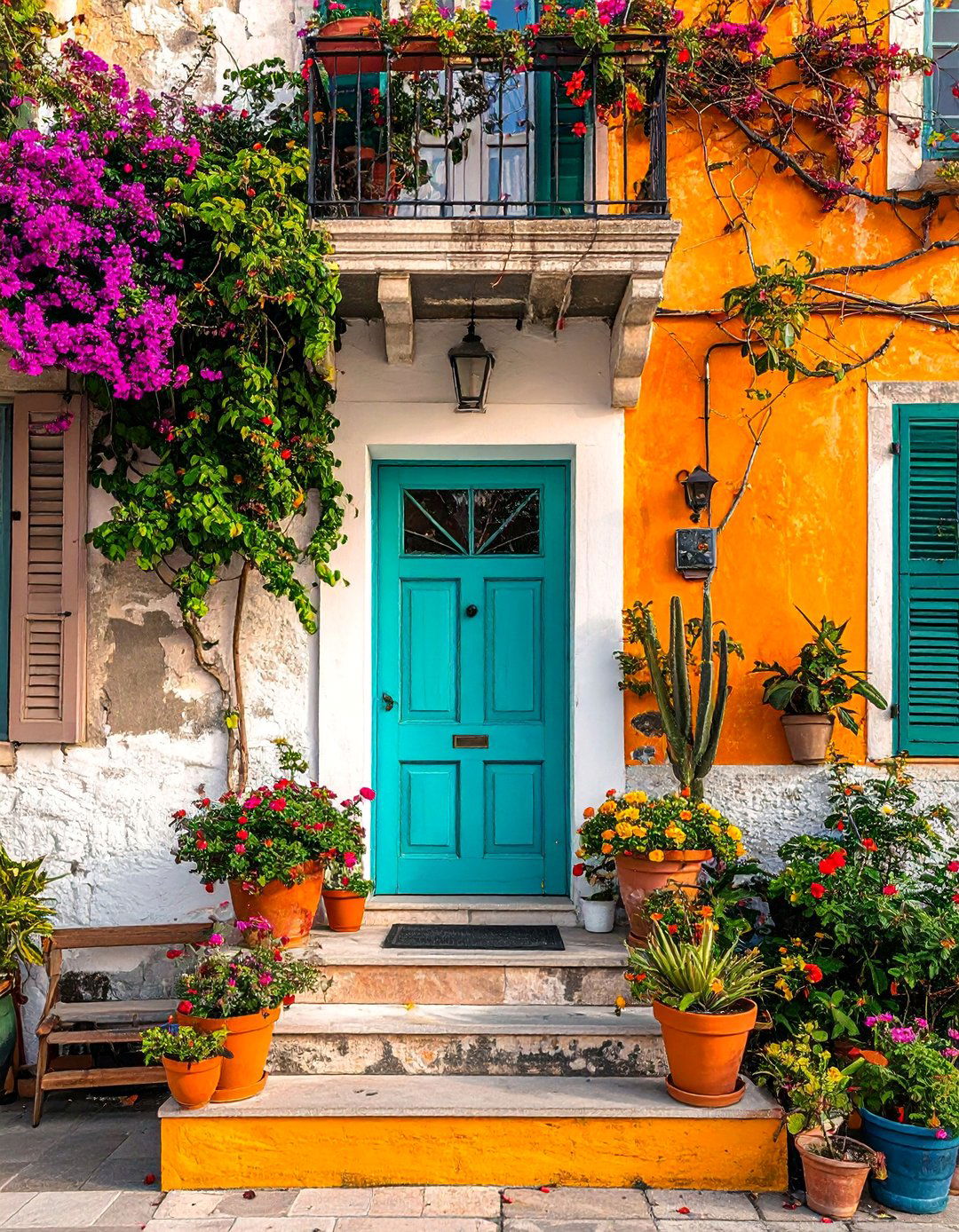
A Bohemian eclectic exterior celebrates freedom, creativity, and a love for nature with a vibrant mix of textures, colors, and plants. This style is less about rules and more about personal expression. The facade might feature a blend of materials like stucco, reclaimed wood, and patterned tiles. A riot of potted plants, hanging baskets, and climbing vines is essential, blurring the lines between the house and the garden. A brightly painted front door, vintage or handmade decor on the porch, and comfortable, layered textiles create a welcoming and lived-in feel. This aesthetic results in a unique, artistic, and deeply personal exterior.
17. Prairie School Exterior with Horizontal Lines
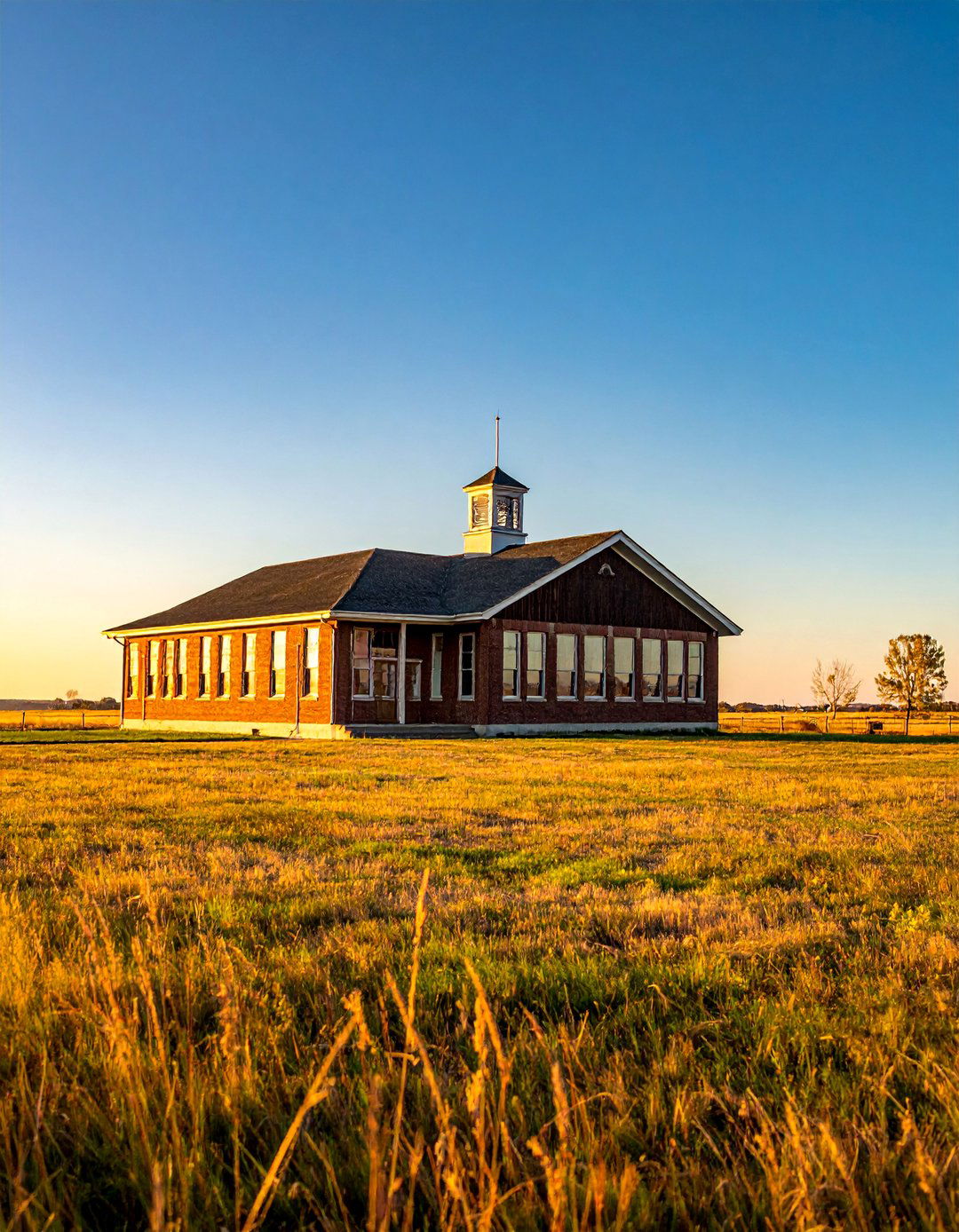
Inspired by the work of Frank Lloyd Wright, the Prairie School exterior is designed to echo the long, low lines of the Midwestern landscape. This architectural style is defined by its strong emphasis on horizontal elements. Low-pitched hip roofs with wide, overhanging eaves create a grounded, sheltering effect. Bands of windows, often with art glass details, are grouped together to reinforce the horizontal orientation. The materials used are typically natural and honest, such as brick, stone, and wood, further connecting the structure to its site. This results in an organic, cohesive design that feels both expansive and intimately tied to the earth.
18. Mountain Rustic Exterior with Stone and Timber
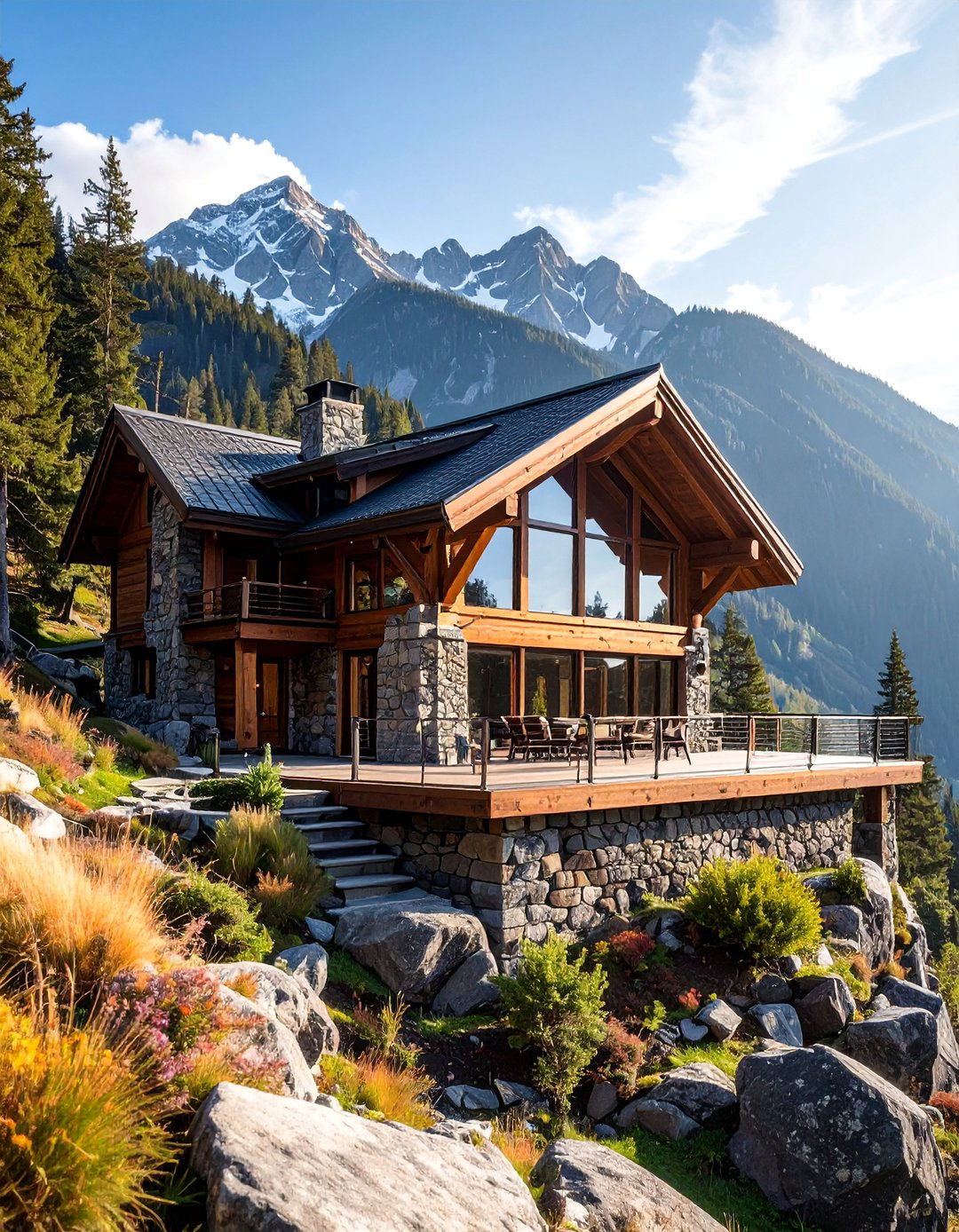
A mountain rustic exterior is designed to blend seamlessly with a natural, wooded, or mountainous setting. This aesthetic relies heavily on rugged, natural materials like heavy timber beams, logs, and substantial stonework for foundations and chimneys. The overall look is sturdy, warm, and inviting. A-frame or gabled rooflines are common, designed to handle heavy snowfall, and large windows are often incorporated to capture breathtaking views. Expansive decks and covered porches provide outdoor living spaces to connect with the surrounding landscape. The result is a cozy yet grand retreat that feels both timeless and deeply connected to nature.
19. Art Deco Exterior with Geometric Patterns and Sleek Lines
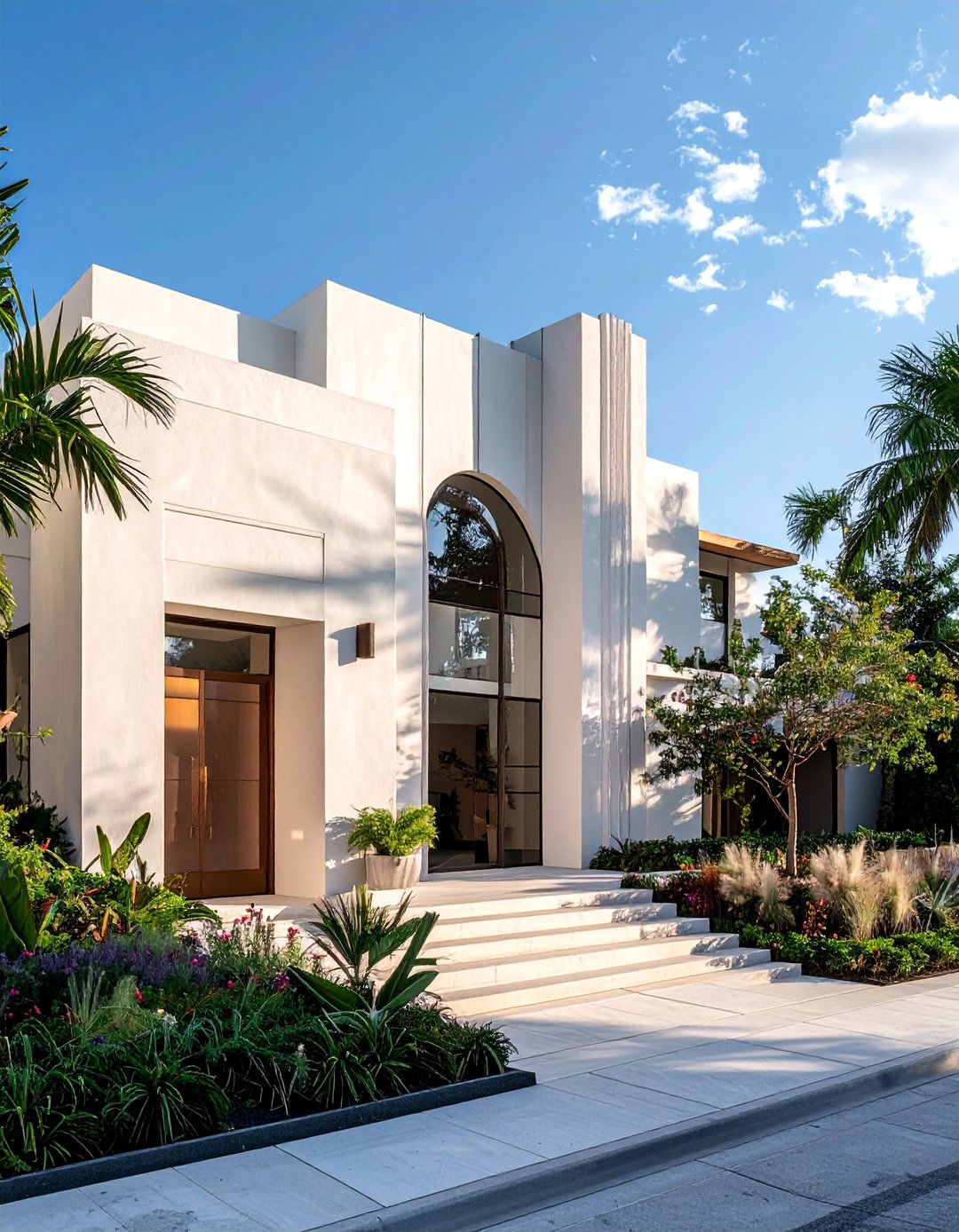
The Art Deco house exterior is a bold, glamorous style that emerged in the 1920s and 1930s, characterized by its sleek lines, geometric patterns, and luxurious feel. This aesthetic embraces symmetry and stylized ornamentation. Facades are often made of smooth stucco or concrete and feature strong vertical lines, stepped rooflines, and decorative motifs like chevrons, zigzags, and sunbursts. Accents of polished metal, glass blocks, and intricate ironwork add to the opulent look. Windows are often arranged in geometric patterns, and the front entrance is typically a grand focal point. This style creates a sophisticated and visually dynamic exterior with a distinct vintage flair.
20. Contemporary Tropical Exterior with Open-Air Concepts
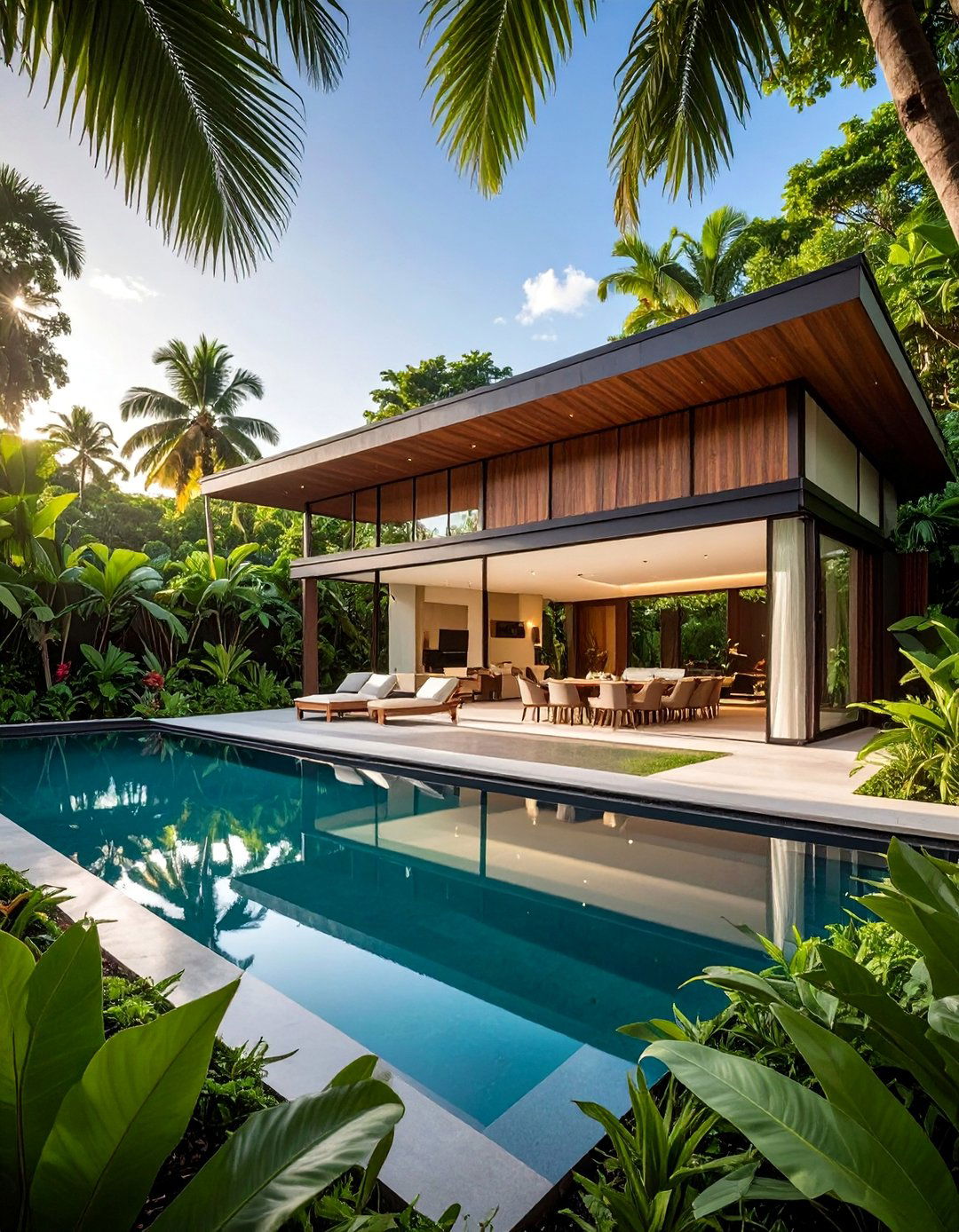
A contemporary tropical exterior is designed for warm climates, emphasizing a seamless flow between indoor and outdoor living. This aesthetic features clean lines, natural materials like wood and stone, and an open, airy feel. Large sliding or folding glass doors open up entire walls to lanais, patios, and lush gardens, promoting natural ventilation. Overhanging roofs provide shade and protection from rain, while features like outdoor showers and pools are common. The landscaping is a critical element, incorporating dense, tropical plants like palms and broad-leafed foliage to create a private, resort-like oasis that celebrates a relaxed, nature-centric lifestyle.
Conclusion:
Ultimately, creating an aesthetic house exterior is about finding the right balance of color, texture, and architectural style that reflects your personal taste and complements your home's structure. Whether you prefer the clean lines of modern design, the rustic charm of a farmhouse, or the ornate details of a Victorian home, each approach offers a unique way to boost curb appeal. By thoughtfully selecting materials, landscaping, and design elements, you can transform your home's facade into a welcoming and beautiful introduction to the spaces within, increasing both its value and your enjoyment.

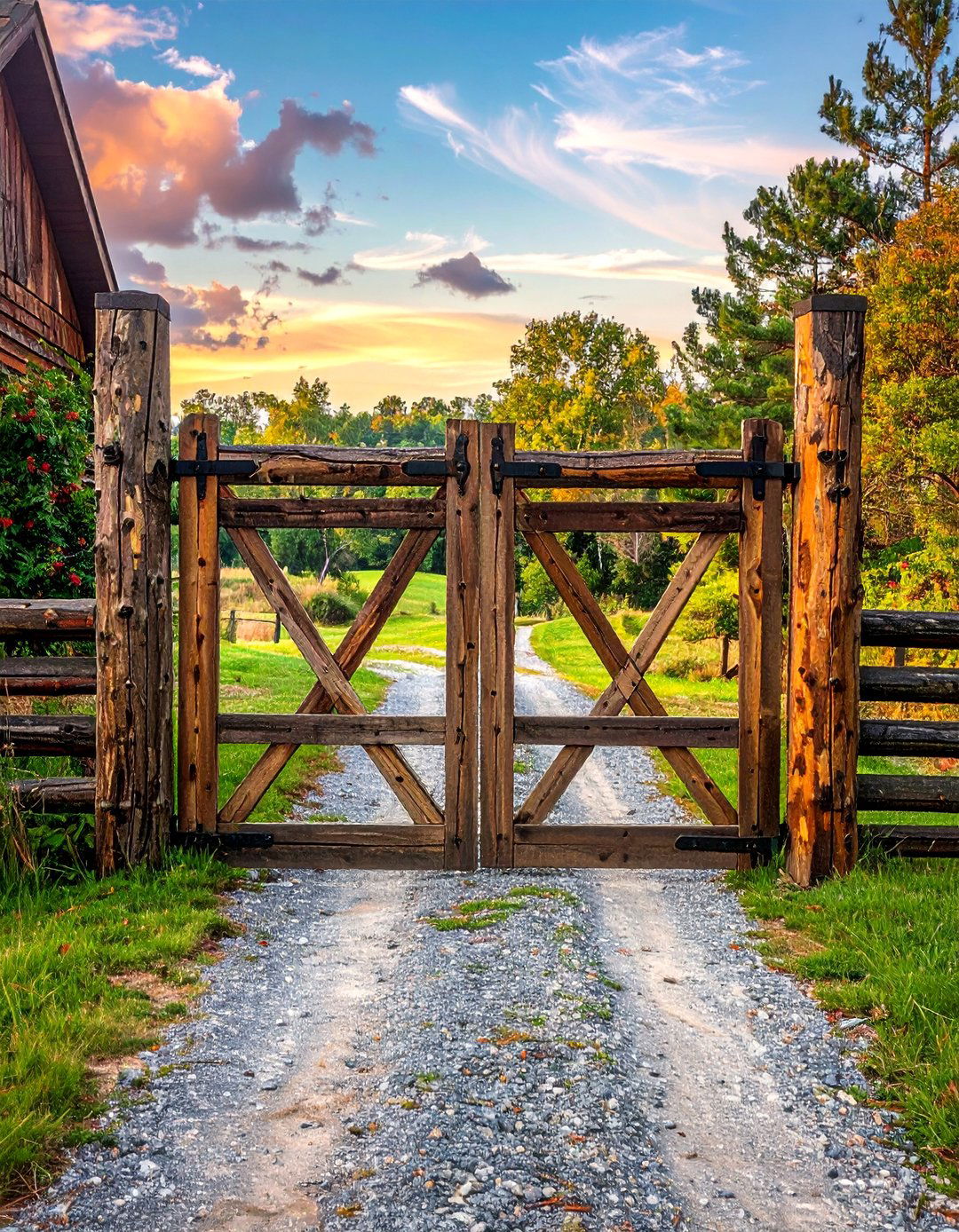
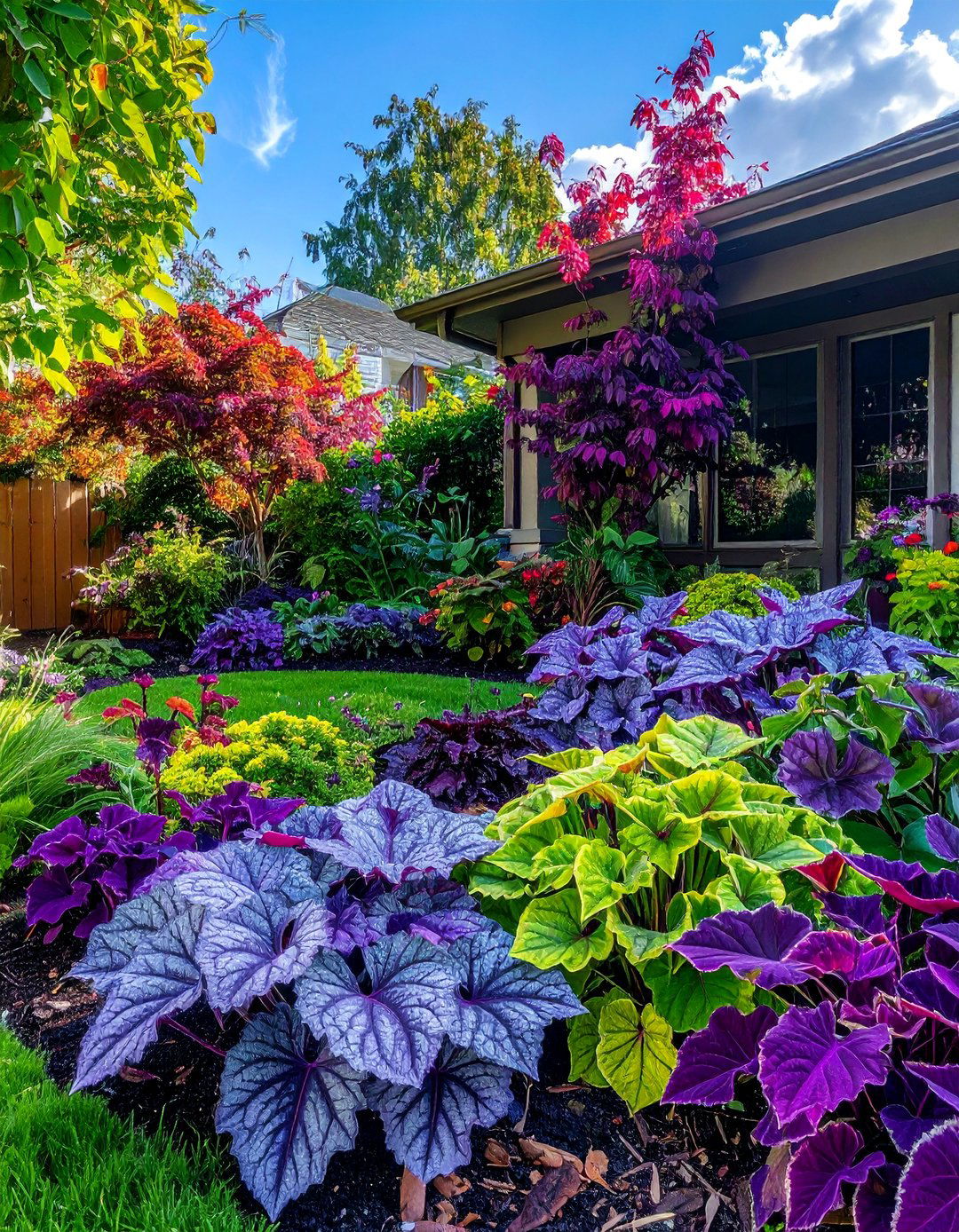
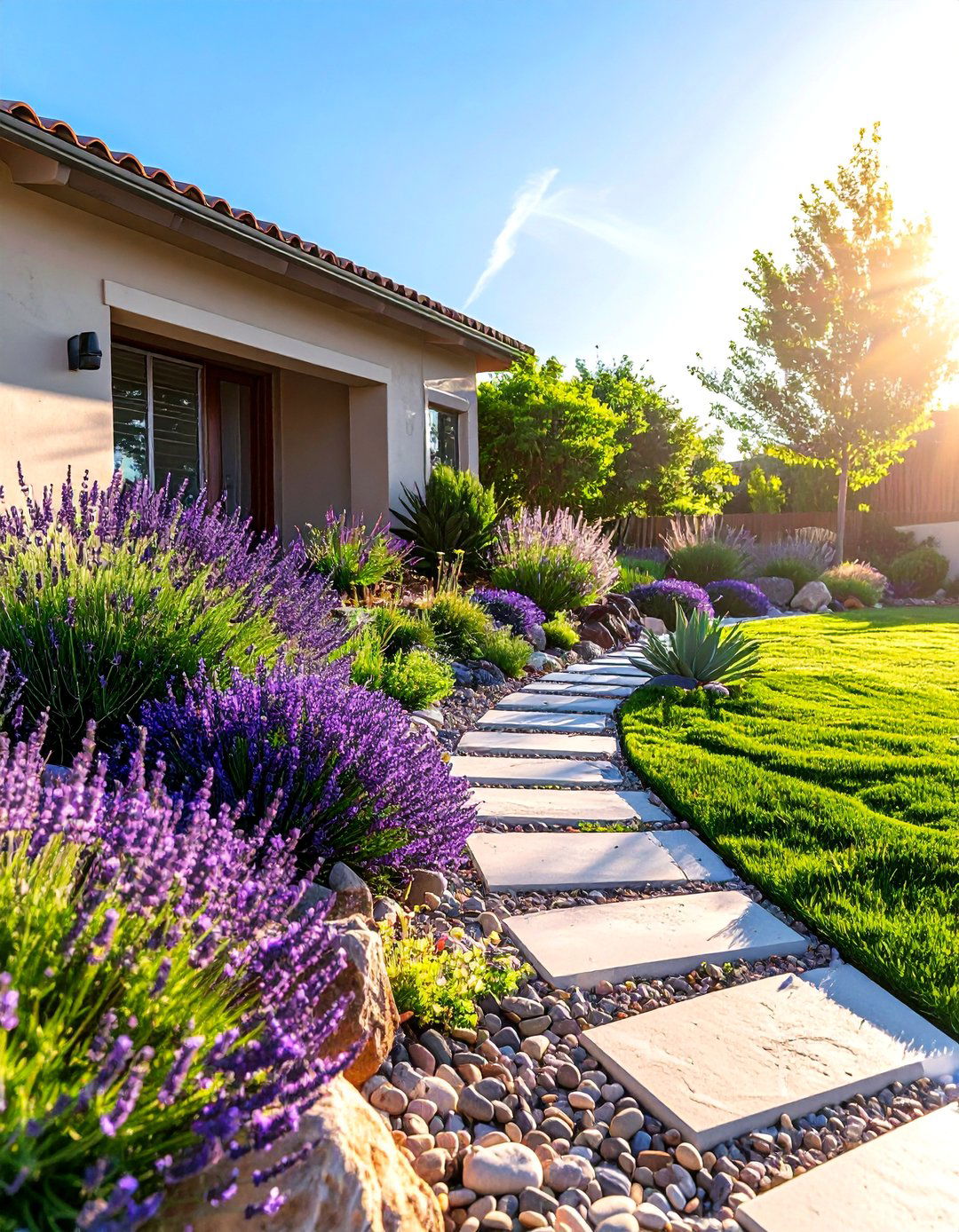
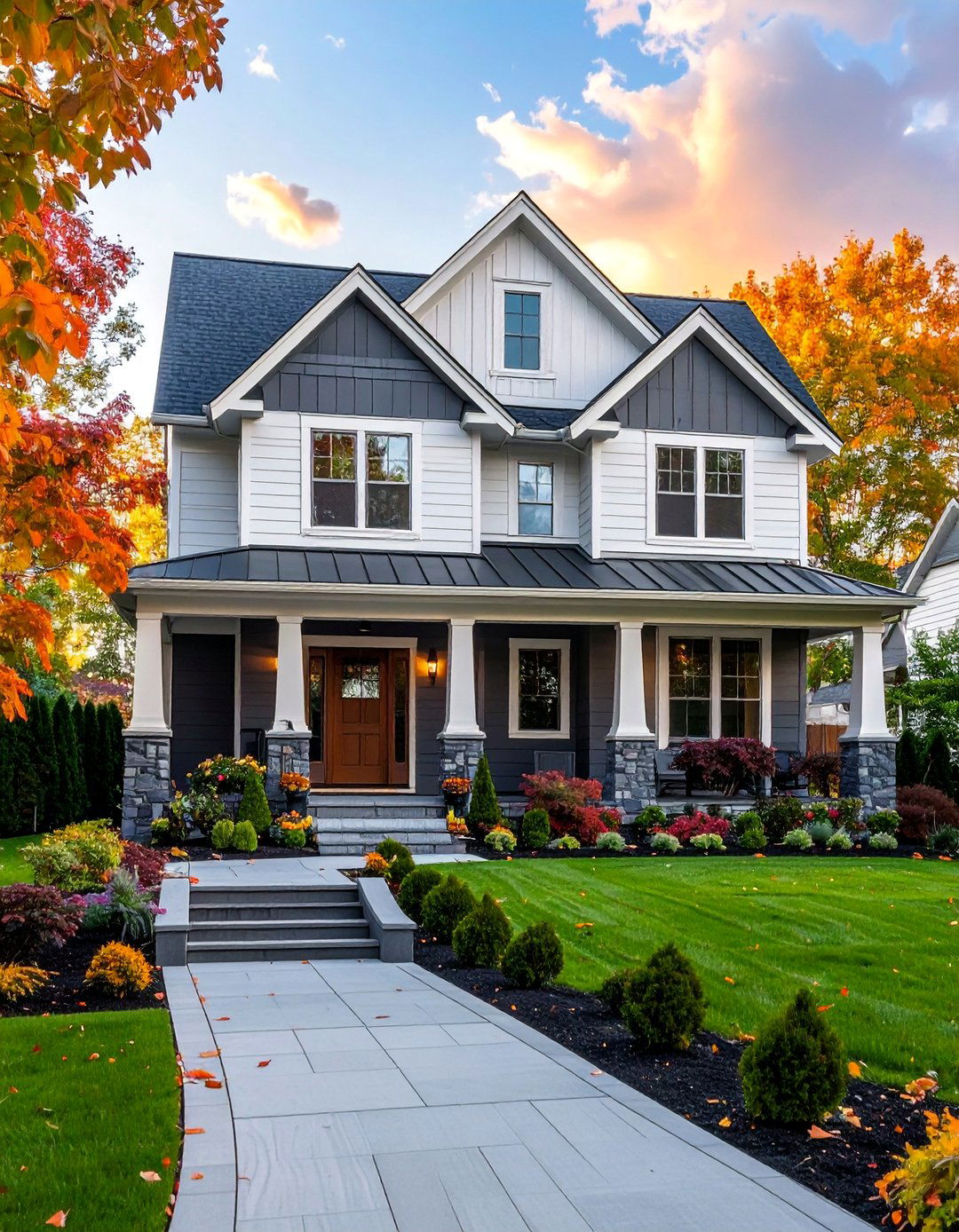
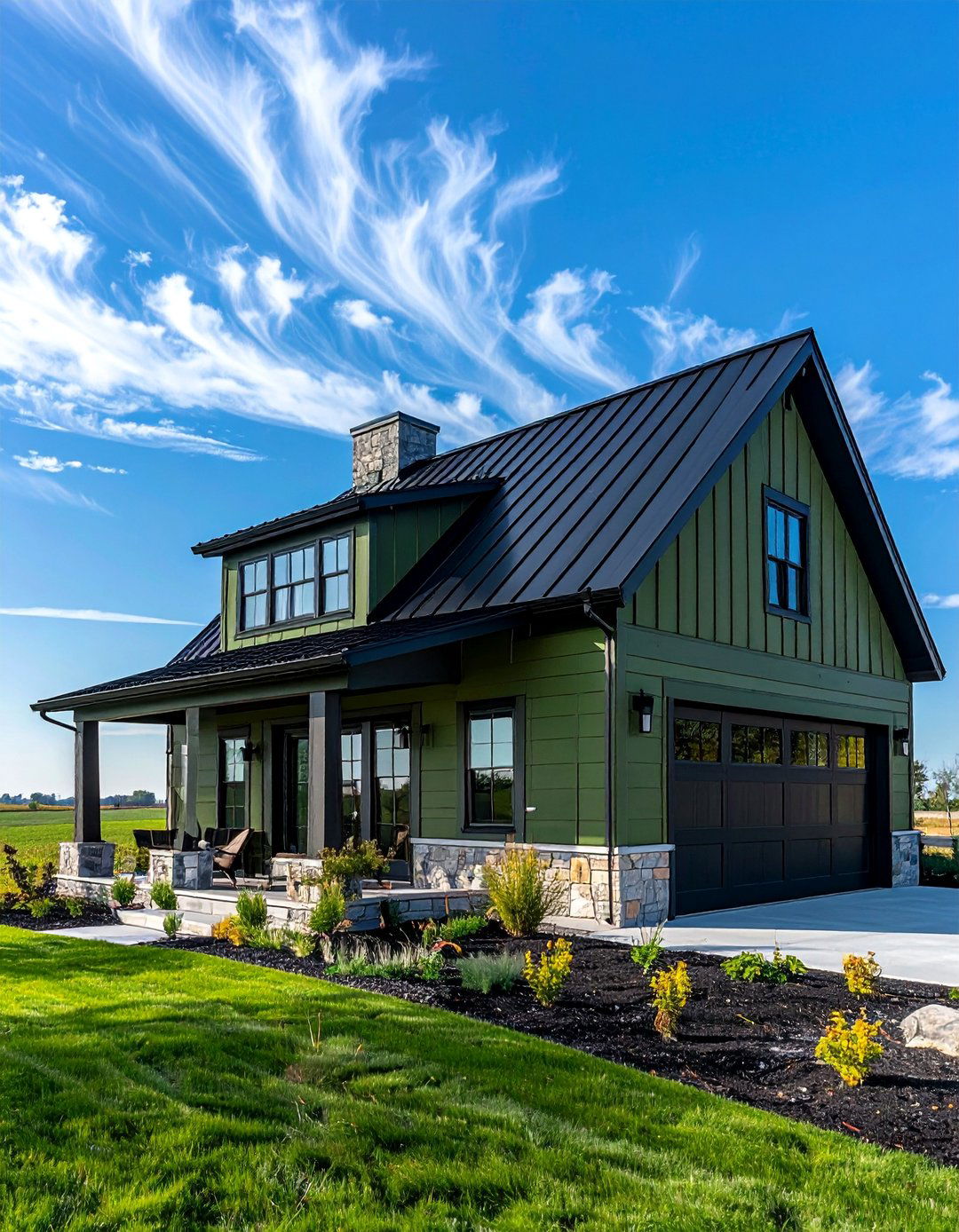
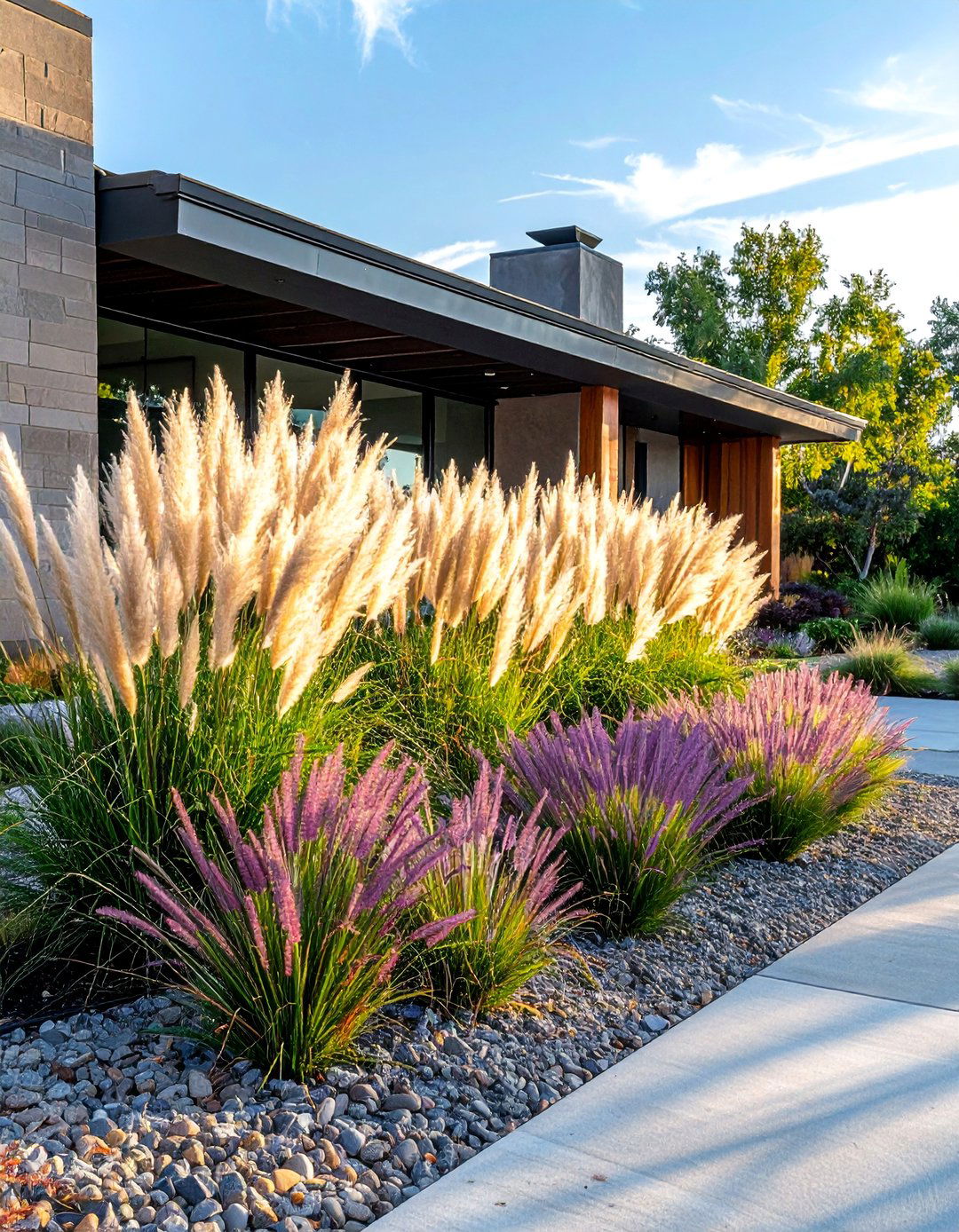
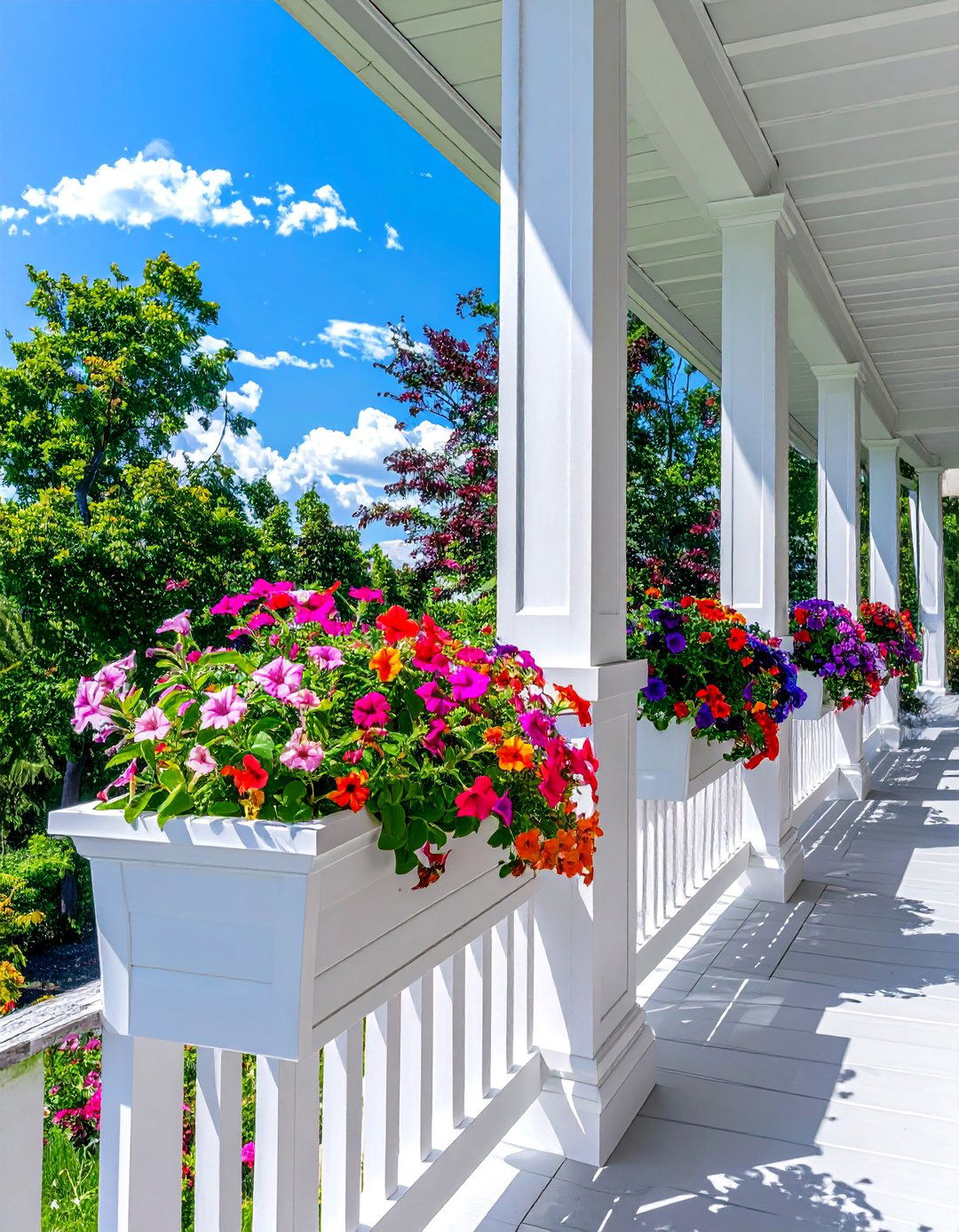
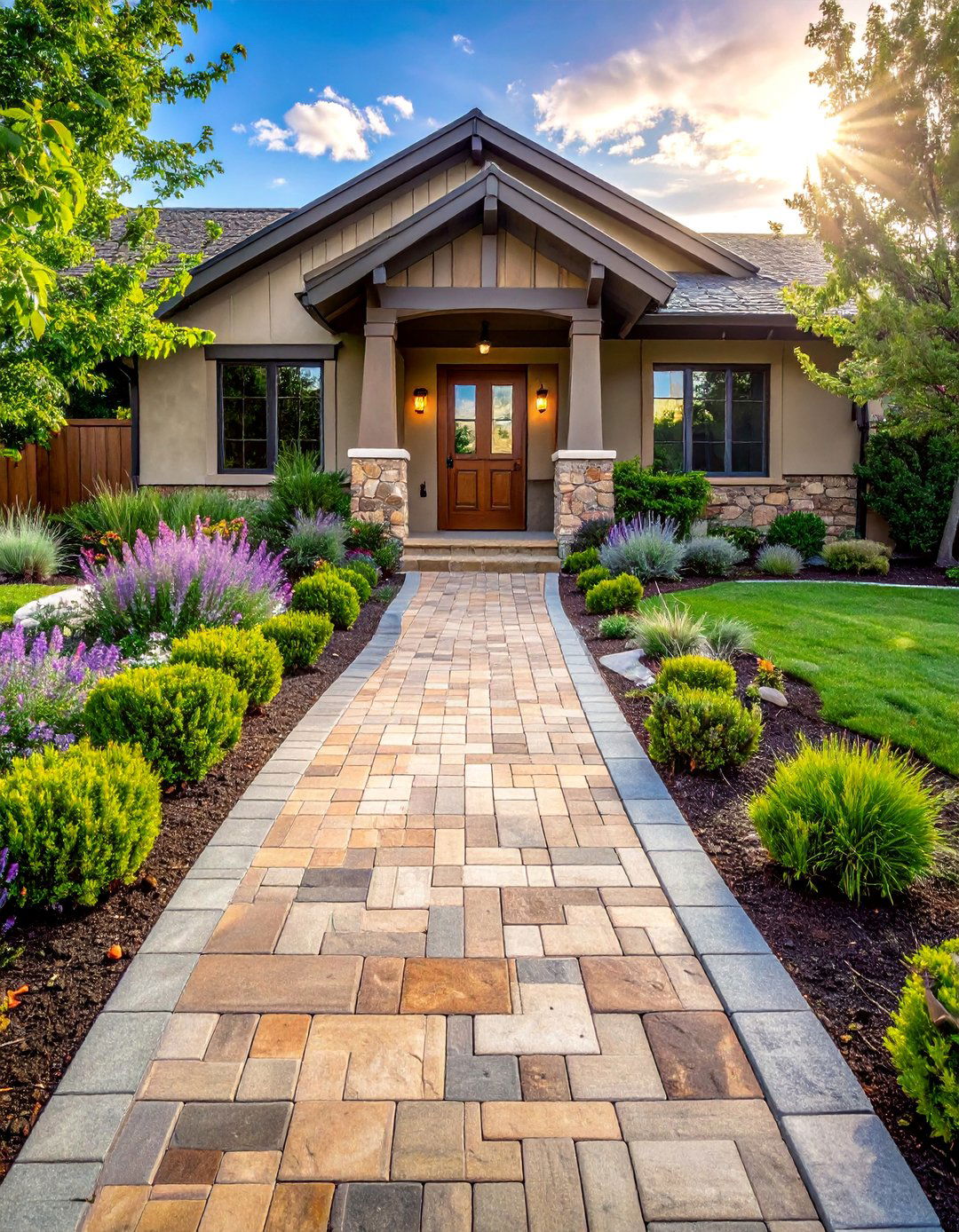
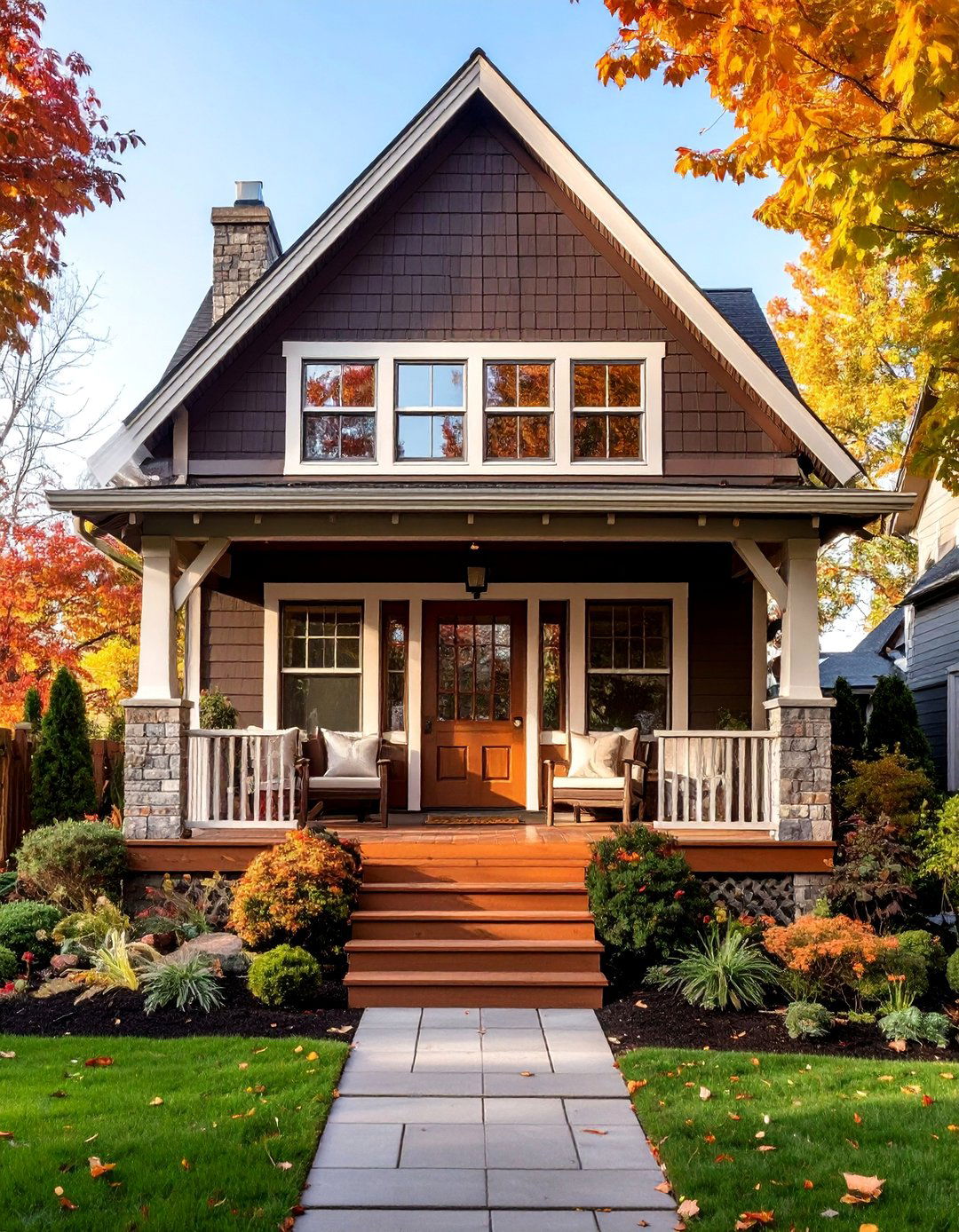
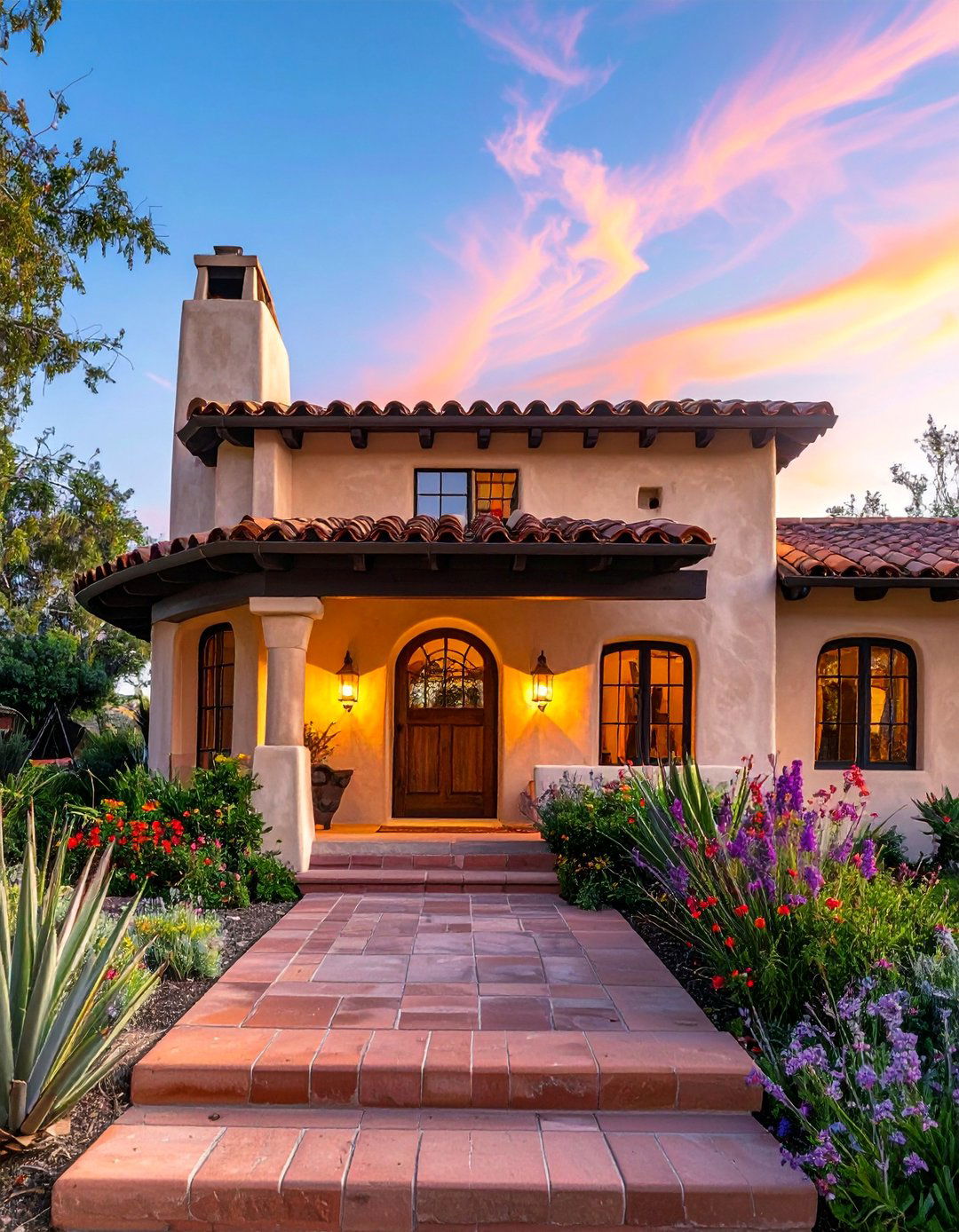
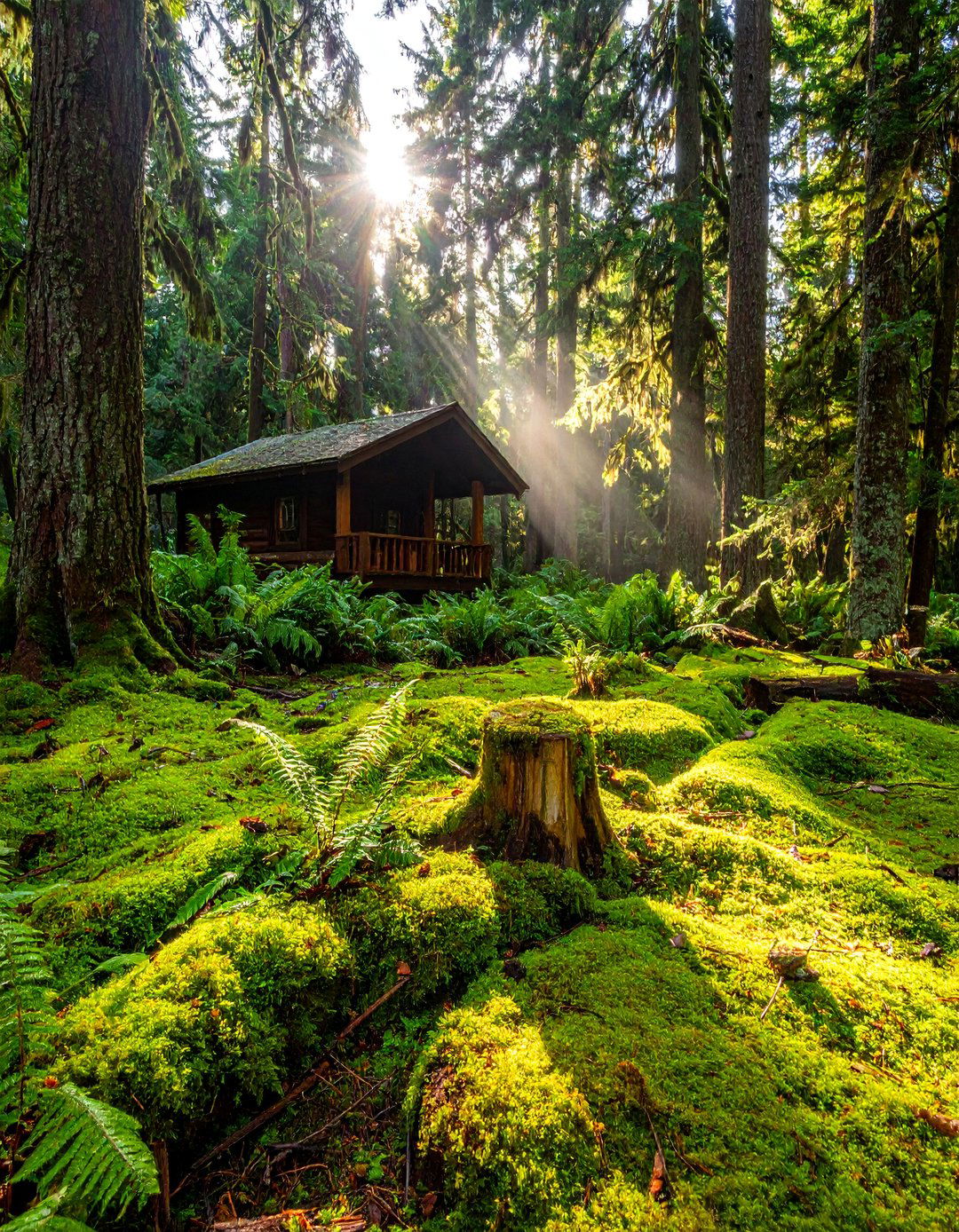
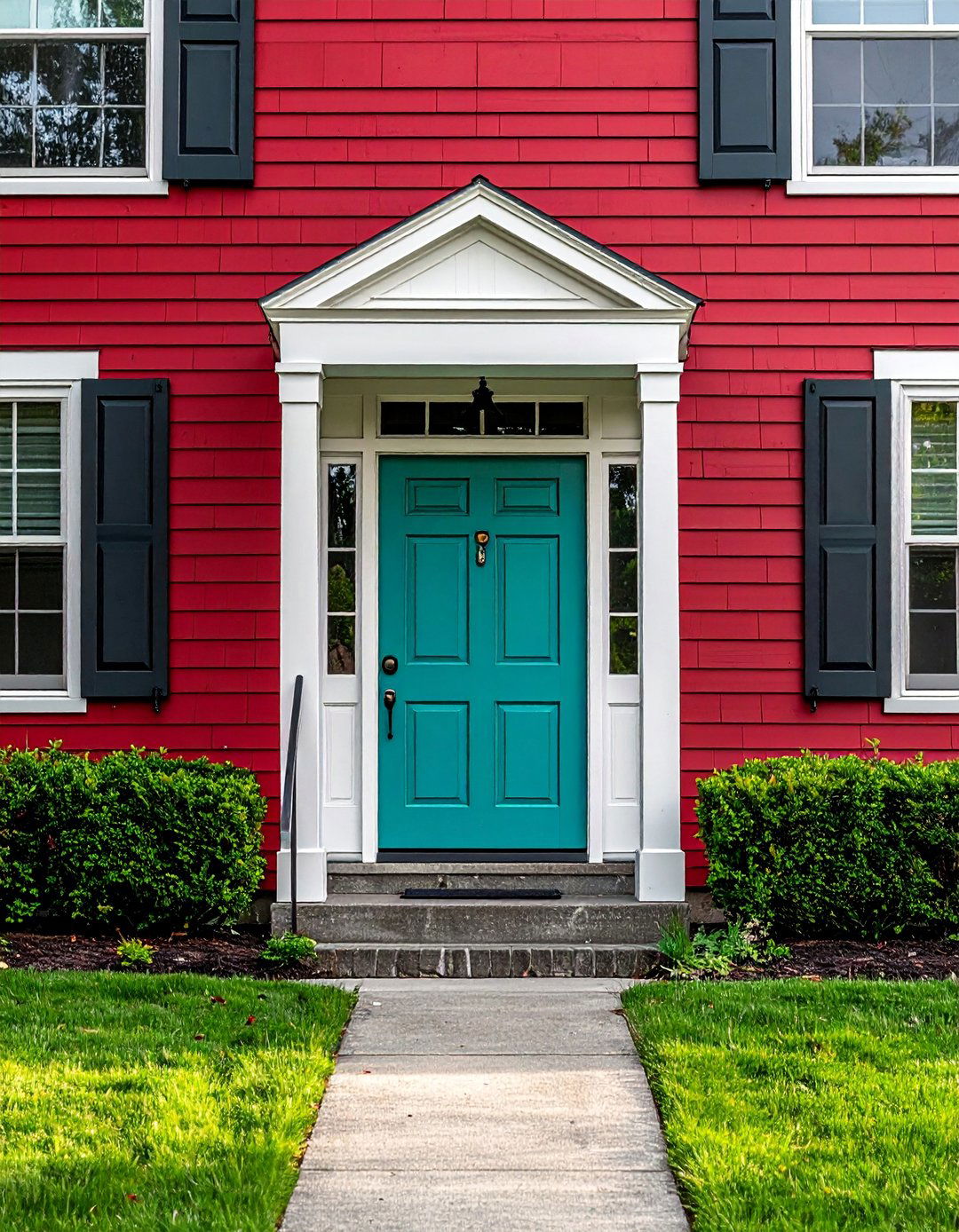
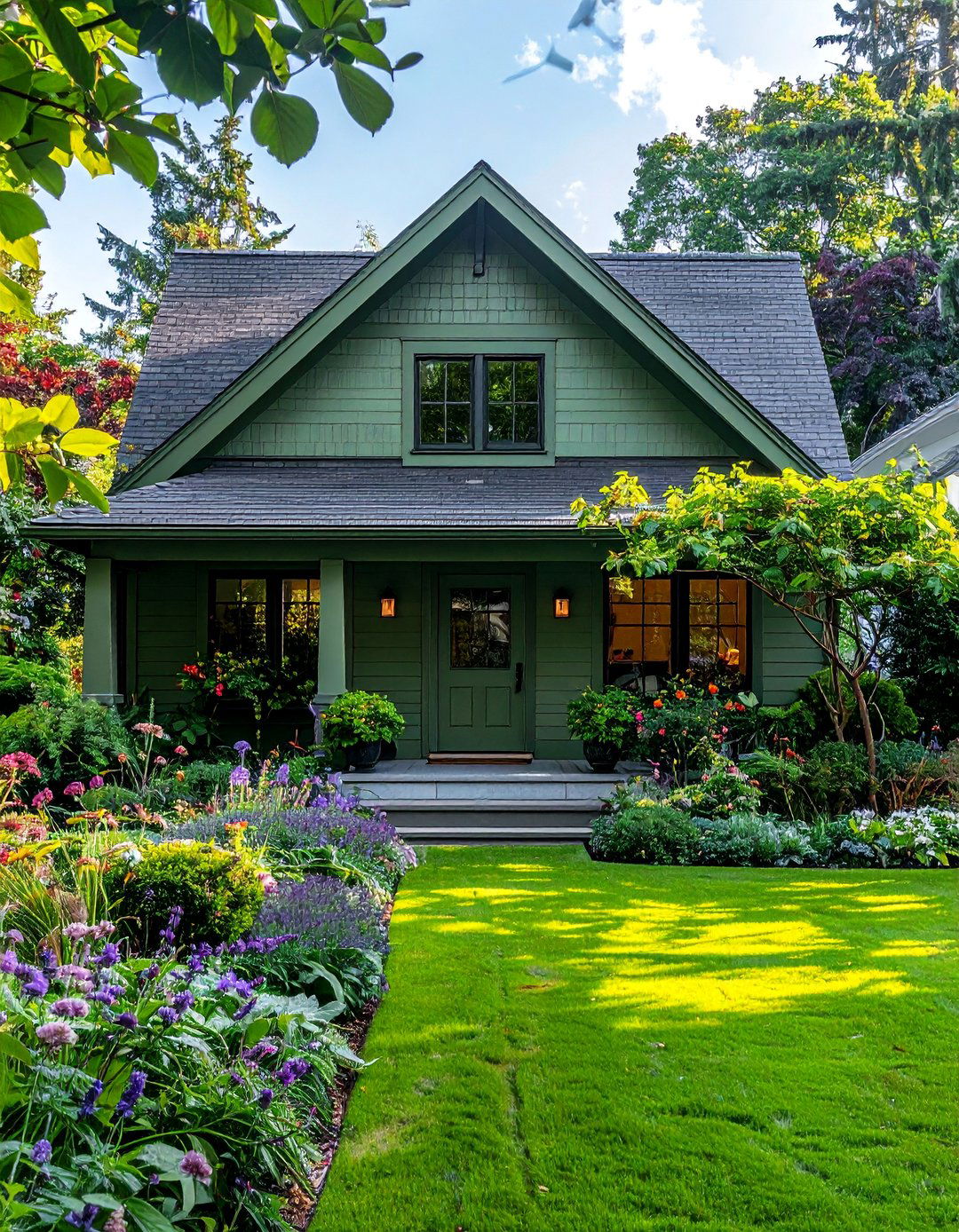
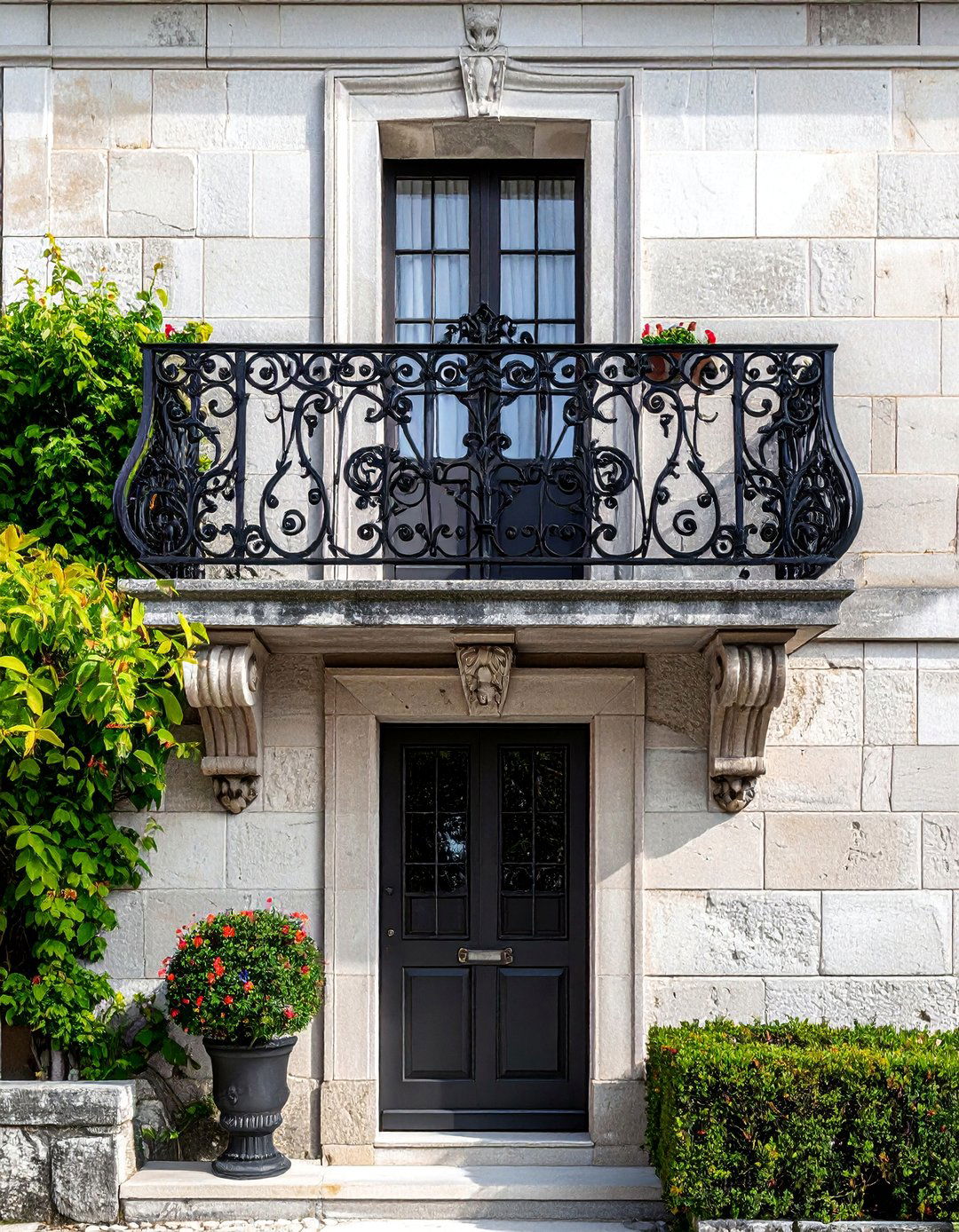
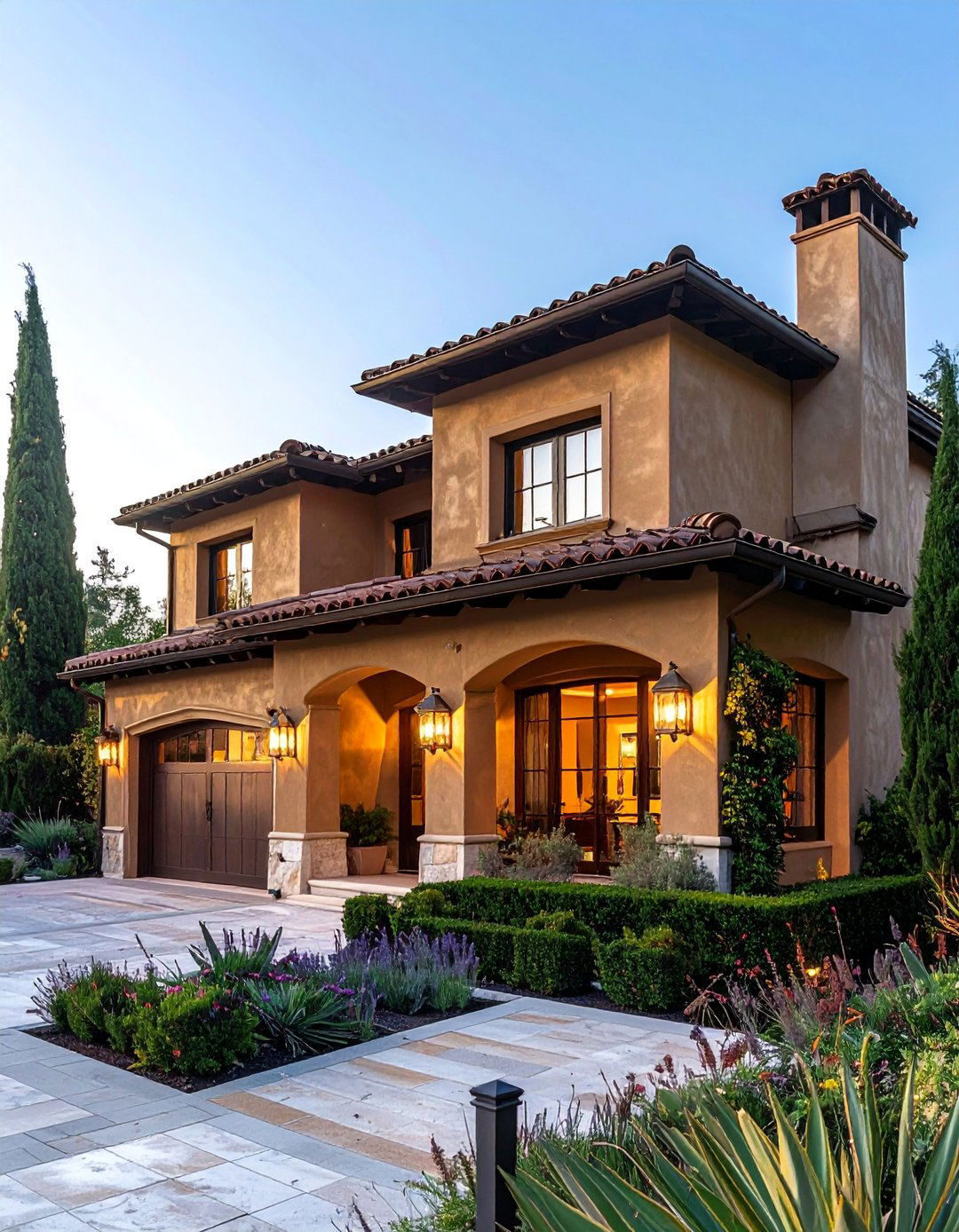
Leave a Reply